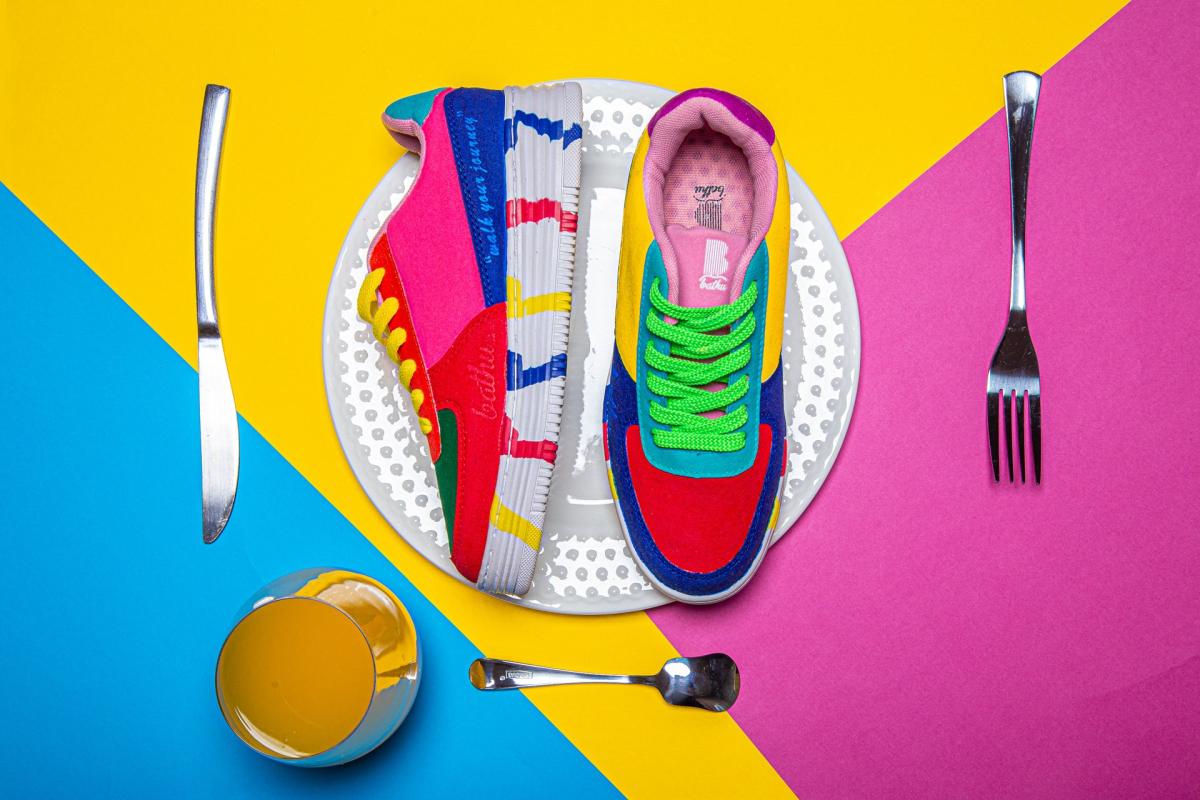Change is a constant. But 2022 is talked of as the beginning of a great reset — the shift to a greener economy, from fuel to lithium, the rise of NFTs and decentralised finance and gaming. New technologies and models are emerging that are likely to radically alter our lives. But while technological advances quickly fade into the background of the everyday, it is often the organisations with a certain mindset and behaviour that are remembered as the drivers of progress.
To decide this year’s top twenty, eatbigfish researched hundreds of companies globally for brands with the ambition, clarity and confidence to match their innovation.
Getir — for delivering to Uber’s Children
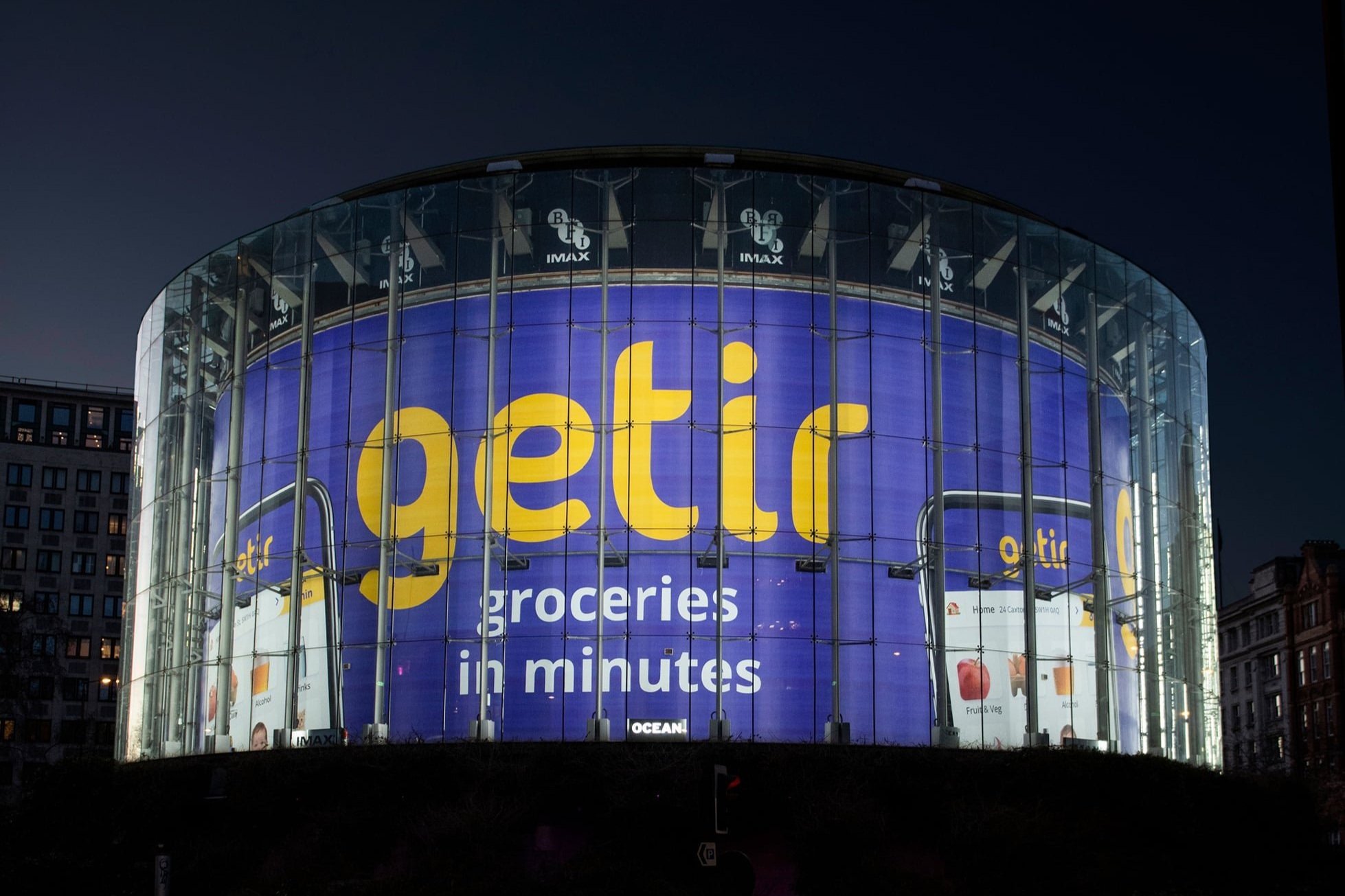
Will the Turkish challenger win the battle for ultra-fast delivery?
Remember when same-day delivery seemed extraordinary? Us neither – that’s strictly for the historians. We’ve all become Uber’s Children now, re-educated by a host of new brands to expect our services to be faster, easier, free-er; the world at our fingertips, on our terms, for next to nothing, instantly.
In this world of Uber’s Children, Amazon has for years been the poster child for ‘fast’; Bezos himself has talked about the stimulating challenge of trying to meet the continually rising expectations of the ‘divinely discontent’ customer. But now there is a new war in the grocery category: the war for ‘ultra-fast’ – companies delivering your order in under half an hour.
Amongst the top three contenders battling for the throne is the Turkish brand Getir. As a challenger, Getir styles itself as a democratiser, albeit with an unusual twist — the founder Nazim Salur is famous for saying that Getir is about ‘democratising the right to laziness’. And their edge over larger rival Gopuff (itself a pivot from a brand that began by delivering shisha pipes) is speed. While Gopuff targets a 30 minute delivery time to get your last-minute guacamole and margarita mix, Getir aims for just 10. Suddenly same-day delivery seems a long, long time ago.
There are several big questions for Getir that the year ahead will start to answer. Is there really a big enough gap between 10 and 30 minutes to drive customer preference, or is this just another case of 7 Minute Abs? Getir understandably reckons that in a world of Uber’s Children, 20 minutes makes a big difference. Does it matter that, despite its striking yellow and purple motorbikes, Getir is an upstart competing against bigger and better-known brands – like Tesco’s new Whoosh service that offers groceries in an hour? Is their pricing strategy sustainable? How long can Getir continue to price below cost? (Accepting that the world is full of well-funded services that have yet to make a dime.)
An $8bn valuation — bigger than Deliveroo or Morrisons — says there’s a lot of people betting Getir will make it work. That speed will kill. And at the same time, Getir has just raised the expectations of Uber’s Children all over again.
After all, with a ten minute delivery time, who still needs drones?
Ola Electric — for green mobility for a billion
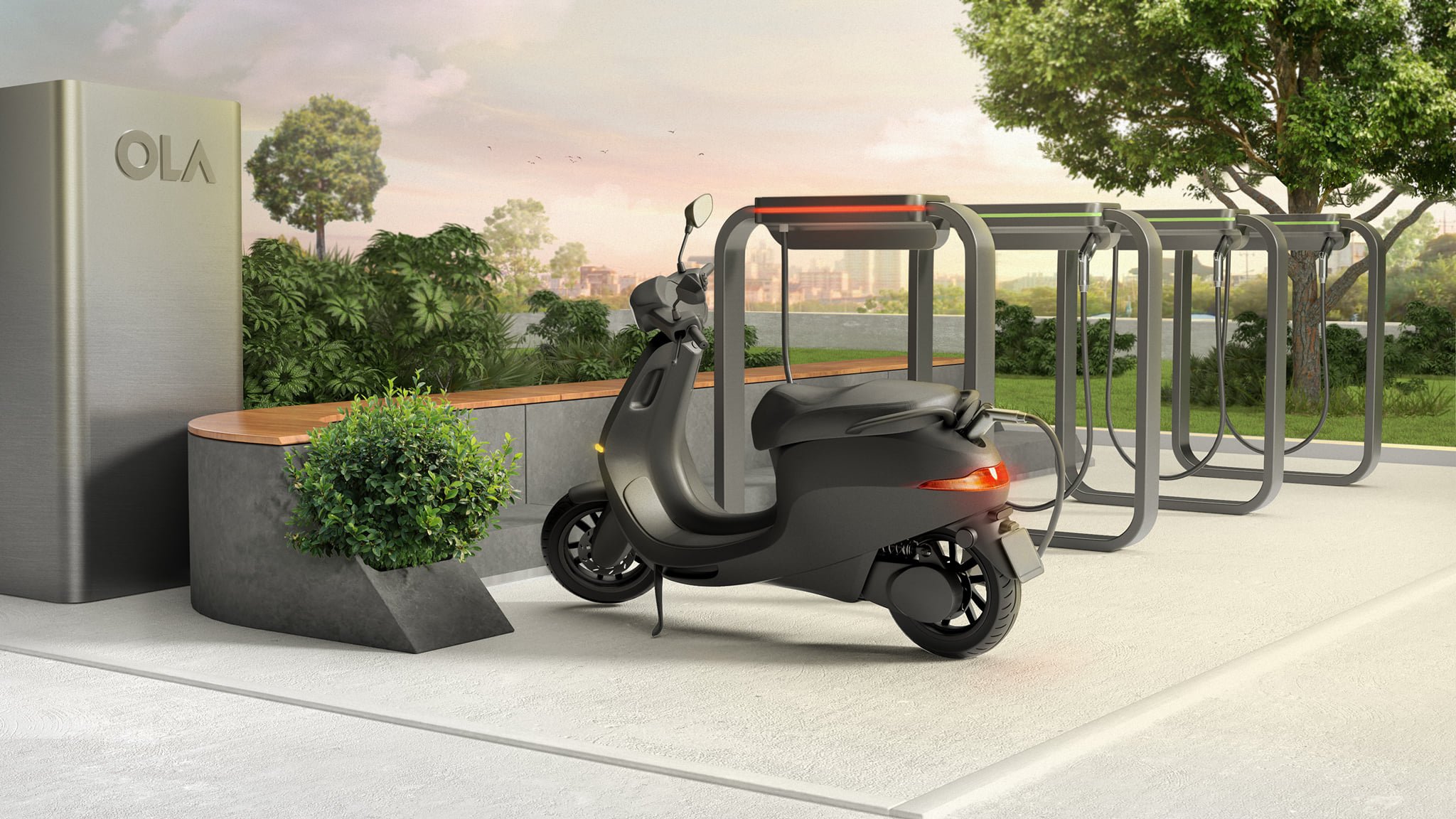
Ola is not new to disruption. It built itself as a leader brand in the ride-sharing category in India through several innovations such as Ola autos (three-wheelers) and Ola bikes, and importantly, by entering markets in the UK, Australia and New Zealand, Ola’s ambition is to build a global brand out of India.
It’s not surprising then that Ola announced plans to enter the EV market by setting up India’s largest electric two-wheeler plant with a capacity to churn out 10 million scooters a year in Tamil Nadu, India. For an internet-age company with no history of automobile engineering, it’s brave.
Unlike in the ride-hailing category, where it faces only one competitor – Uber, in electric two-wheelers, Ola faces competition from many established two-wheeler brands such as Bajaj, Hero and TVS. But the brand is audacious in its ambition. Total two-wheeler production in India is currently pegged at 20 million. Ola, with its mega factory, plans to create capacity that will be equivalent to half of the current total production.
The ambition is rooted in the fact that India is home to the world’s largest number of two-wheeler buyers, and this number continues to grow exponentially. According to McKinsey, the Indian e-two-wheeler market is expected to hit 4.5-5 million by 2025, accounting for 25-30% of the total market and 9 million by 2030.
Ola is committed to its mission of building mobility for a billion people. The company has announced ‘Mission Electric’, a pledge to support that no petrol two-wheeler be sold in India after 2025. With 80% of vehicles sold in India being two-wheelers, switching to an electric scooter should have a significant positive impact on the climate crisis.
Ola has received a massive response to the pre-booking call for its electric scooter, which could partly be due to the nominal token amount required to make the booking, but certainly indicates consumer enthusiasm for the launch. The key to success for Ola’s plan relies on a dramatic change in the two-wheeler industry rather than a gradual shift to electric scooters in 2022.
Florasis — for the new age of Chinese makeup

You would be forgiven for thinking there’s a bit of a category formula for makeup brands of late. Millennial pink and minimalism have reigned supreme, a utility chic that encourages an airspace uniformity and lab-like aesthetic for product and brand alike. But titanic Chinese challenger Florasis is living proof that sometimes the devil is in the ornate and abundant details.
Founded in the Eastern City of Hangzhou by Lake Xizi, Florasis, or Hua Xizi 花西子 as it’s known in Chinese, is unafraid of maximalism. Specialising in packaging and products that feature traditional and historic Chinese design and craft, Florasis makeup is detailed to the point of artistry. Whether it’s a carved lipstick inspired by Chinese relief sculpture or packaging designed with patterns seen in traditional Miao silverware, the products have an ‘instantaneous heirloom’ quality about them. They sit comfortably in opposition to the Western giants that have previously dominated the market, and the wider category’s fixation on functionality.
Part of the wave Florasis has caught is a resurgence in reverie for culturally Chinese brands and products. Known as Guochao, translating literally to ‘national trend’, sentimental resonance has been cast inward by many Chinese consumers and accelerated in a post-pandemic landscape in need and want of a little more local.
A stark challenger to the European imports re-jigging their offerings to fit the Chinese market, Florasis has launched cosmetic collections spotlighting and celebrating Chinese ethnic minority groups and their cultural craftsmanship. And it’s proving to be immensely popular. What’s more, these details are brought to life authentically; a master of miniature carving, an ancient lock repairman, and an inheritor of Chinese Ocarina are but a few of the brand’s co-creation team, translating these time-honoured practices for innovative modern use.
Yet it’s important to note that, alongside this curation of tradition and heritage, is a startlingly futuristic commitment and execution of digital and data capabilities. Throughout development, Florasis’ “experience officers” or “flower companions” have been crucial in providing real-time feedback for the brand’s first products. Now in the hundreds of thousands, Florasis won’t launch a new collection or item until a 90% satisfaction rate is achieved from its community within testing – the added benefit of course being a pool of brand fans with a vested interest in promoting the company they have a tangible stake in. In tandem, its D2C operation made busy-work of livestream e-commerce platforms such as Douyin in its nascent phases, and it’s paid dividends (and yet to see real competition from Western counterparts), achieving $460m of e-commerce sales in just three years.
However, Florasis is averse to burning twice as bright and half as long. Uniquely positioned as ‘building a centennial brand’, its fourth-anniversary campaign saw the introduction of a brand vision promoting 100 years of Chinese beauty; its Weibo tagline read, “Florasis is 96 years away from being a 100-year-old brand”.
With plans to expand globally already underway, it seems the golden age of Florasis will be a long time coming.
VanMoof — for challenging the tyranny of the car
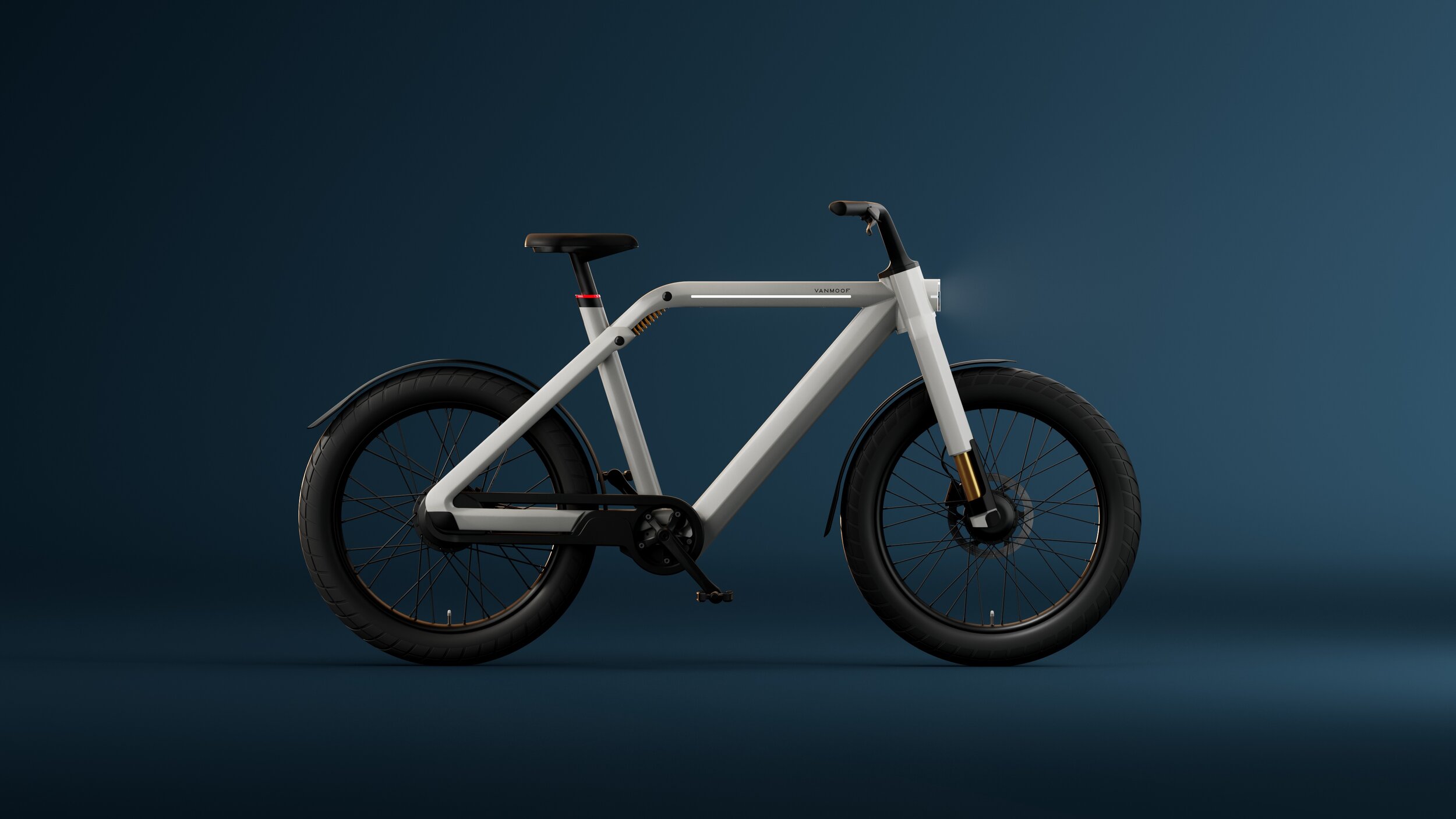
A key hallmark of a challenger brand is a desire to bring progress to their category or to the world in general. How that challenger defines progress is largely up to them — but for many, it’s a move from the broken and conventional thinking of today, towards a more promising future.
For Van Moof, the Dutch electric bicycle manufacturer — that future can’t come soon enough. And as someone living in Los Angeles, one of the most congested, traffic-cursed cities in the world, I’m right with them in wanting that same future.
For many of the major cities of the world, the car has become a huge problem. In 2018, London passed its annual legal air pollution limit by the end of January. A move from bricks and mortar to online shopping has increased the number of delivery drivers crisscrossing our cities, and the (once) added convenience and affordability of rideshare platforms has made hopping into a car a viable alternative to finding public transport. All of these elements are strangling our cities — even the ones that were built to be “car-centric”.
VanMoof wants us all to do something about that. For the last couple of years, they’ve been waging a public war against cars and car culture — most notably with a 2020 advert that was banned from airing on TV (always a guarantee for greater visibility!) in France.
“We were always aware that this commercial isn’t your usual bike ad,” co-founder Taco Carlier told The Verge. “It’s really a call to action, a chance to leave the past behind and make real progress that benefits everyone. Questioning the status quo will always be confrontational, but that was our purpose from the start”.
Having raised $182m worth of funding over the past two years, founders and brothers Taco and Ties Carlier have explained that they want to put that money towards changing the way we think about our city lives. “We’re on a mission to make two wheels the default for commutes worldwide… We want to help get the next billion onto bikes”.
To do that, VanMoof offers one of the world’s most advanced and stylish electric bikes - they’ve unimaginatively been dubbed the Tesla of e-Bikes by several outlets — but the comparison in making electric bikes a “want” instead of a “should” is notable. The bikes include many top-of-the-range features thoughtfully designed around a city dweller’s needs, including a dedicated Bike Hunter theft squad that will hunt down your bike within two weeks or replace it with a bike of a similar standard and age. Prices are premium but considerably cheaper than owning and running a car. And as an e-bike user myself, I can attest to how much fun they are to ride.
Their focus is often on what these bikes can do for the cities we live in, not just those that choose to ride them. The company feels that now is the time to launch an all-out assault on car culture and the damage this obsession has wreaked upon our cities. As we all begin to emerge from this pandemic and head back to our normal lives, VanMoof wants to consign the automobile to the past.
It’s a timely mission to be on, and one that is gathering attention in all sorts of different spaces, particularly as Americans reckon with the failures of their current infrastructure and questions about how they serve the communities of the future — with better standards for city dwellers being rightly positioned as a social justice issue. Cities as large as Paris and London are working to rid us of our dependence on the car by making it less and less appealing. Last year, I wrote about Culdesac - a development in Tempe, Arizona, that wants to be a proof of concept for a car-free neighbourhood.
Amongst this backdrop, a challenger that can show us a fun and enjoyable way forward surely stands a fantastic chance to capitalise on our changing relationship with our cities.
Here’s to us all riding into a better future in 2022.
RTFKT — for pushing the boundaries of sneakers
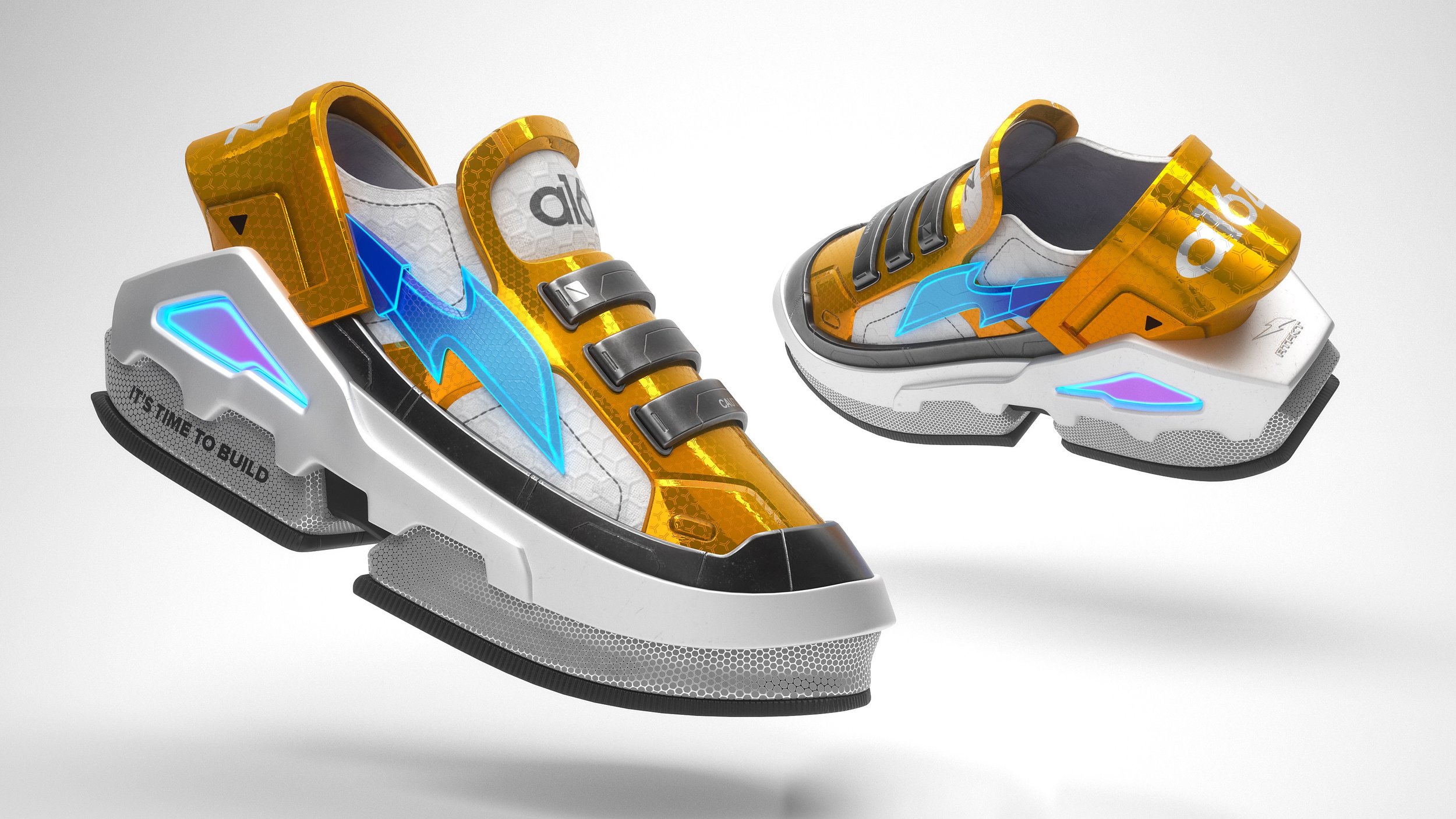
No list of predictions for 2022 is complete without highlighting NFTs (Non-Fungible Tokens), the unique digital art stored on the blockchain that’s currently trading for eye-watering prices. A digital picture of a cat for $172,000? Nope, me neither.
But this is a list of challenger brands, so first and foremost, RTFKT is most definitely ‘a brand’.
Founded in 2020, RTFKT (pronounced ‘Artifact’) Studios makes NFT sneakers. The company’s aim is to become a highly visible and prominent brand in the metaverse in a similar way to how Nike or Adidas are in the physical world. “We want to be the brand of the metaverse,” co-founder Chris Le, told Coin Telegraph. “A person should be able to go into one VR game and see RTFKT, hop into an AR game and see RTKFT, and then into a PC game and see us again.”
So what makes RTFKT a challenger?
What sets the company apart from other NFT brands is their clear point of view. They believe that the sneaker category has gone stale and is out of ideas. With the industry dominated mainly by Nike and Adidas, and their most popular sneakers still based on the designs they launched in the late-80s and early-90s, it’s hard to disagree.
“The contemporary sneaker market is quite boring,” co-founder Benoit Pagotto told $Whale Community. “There are some iconic shoe silhouettes that repeatedly receive new colorways. [...] manufacturing sneakers is costly, so it’s way more efficient to set up all the machinery for one model and just change colorways and do simple adjustments. We can see the boredom in the market. And that’s our niche.” This belief in countering sneaker boredom powers RTFKT and sits at the heart of the studio’s innovation and creativity.
RTFKT’s sneakers are bold, imaginative and bursting with insane ideas that borrow heavily from the art world, cinema and video game culture. Free from the constraints of the physical and material world, RTFKT pushes the boundaries of sneakers metaphorically but also literally — the designs extend way beyond a traditional sneaker silhouette with form and colour combinations previously unimaginable.
In early 2020, an image surfaced online of Elon Musk wearing a pair of RTFKT sneakers inspired by his Cybertruck. RTFKT posted the photo to its Instagram, tagging Elon Musk, and it quickly went viral. The photo, however, wasn’t real. RTFKT had photoshopped the image. Of course, real or not, it didn’t matter, the image blew up on social media, was picked up by industry media, and RTFKT’s hype train rolled on. It was an incredibly effective and subversive guerilla marketing campaign that would have made any resourceful challenger brand proud.
With the expected growth of the metaverse and the idea that many of us will be purchasing trainers for our digital avatars to wear in the near future, it’s clear that the large global sportswear giants may have a challenge on their hands from not just a new competitor, but from another world entirely.
And that’s why Nike snapped RTFKT up in December last year for an undisclosed amount, although the studio reportedly received a valuation of $33m in May 2021.
It’s easy to imagine Nike bringing RTFKT’s technology in-house to launch its own Nike-branded NFTs in the very near future, which could well spell the end for RTFKT as a brand after all.
But for now, 2022 is RTFKT’s year.
Folx — for representing a sea change in healthcare
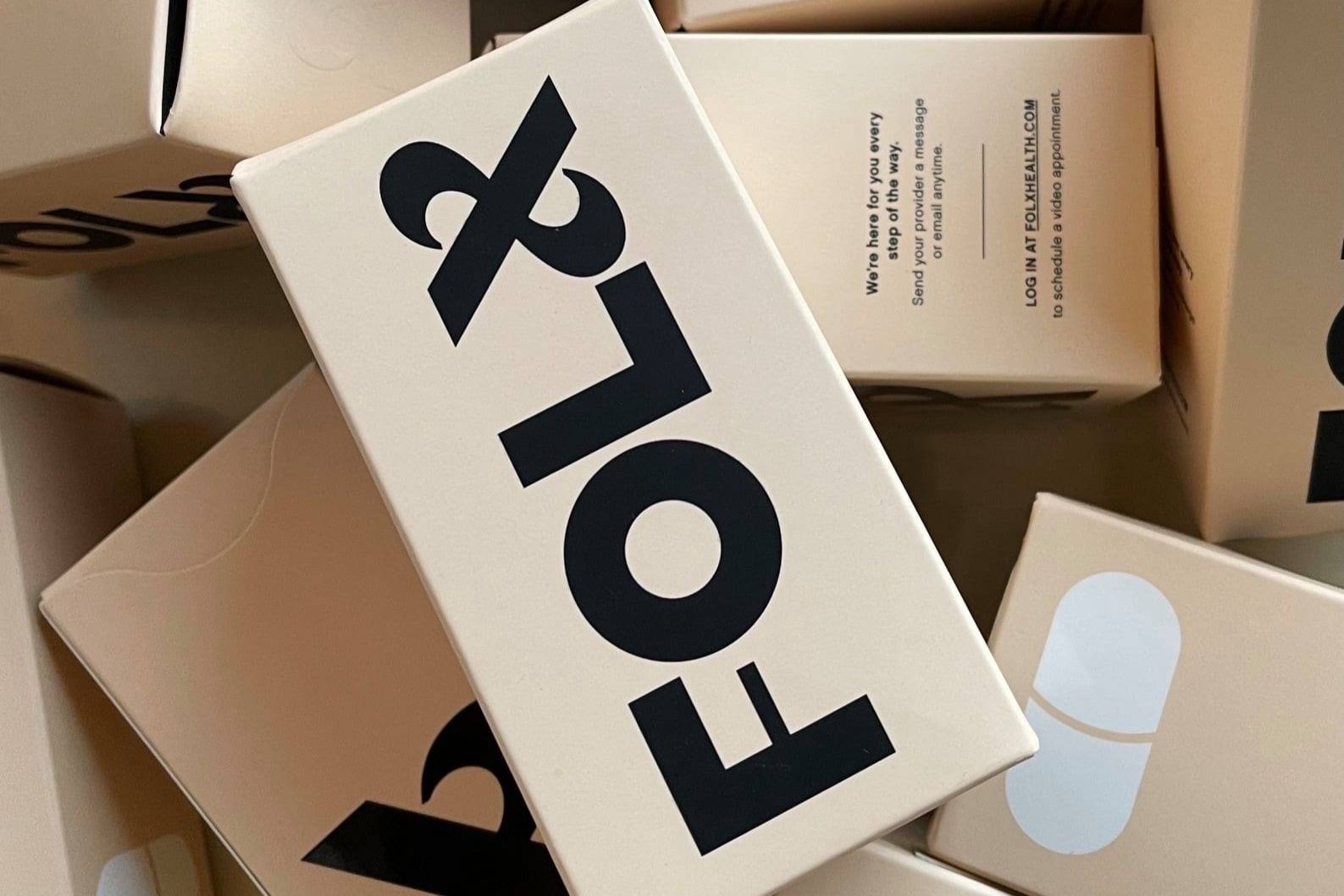
It feels uncontroversial to say that healthcare should be human-centered. How can you effectively provide care without understanding patients’ bodies and their lives?
Sadly, that’s a question many queer and trans people find themselves asking.
For these communities, healthcare can be a parade of indignities. The seemingly arbitrary barriers to care. The lack of understanding of the sex that you have or treatments that you seek — stemming at least partially from the average US med school spending six hours or less over four years on queer and trans health. And, most troublingly, the potential for harm — more than half of all LGBTQIA+ people face discrimination while seeking medical care, while 7% of cisgender queer folks and 22% of trans folks are actively assaulted in healthcare settings.
There’s potential to sidestep some of these things by going to health centers catering specifically to the queer community, but they’re geographically few and far between and subject to high demand and long waits.
And so, queer and trans people are left with a cruel irony: the system in society that should arguably be most humane and healing can often feel dehumanizing or cause harm.
Enter Folx Health, the first healthcare platform designed specifically for queer and trans people.
In the words of founder A.G. Breitenstein, Folx exists
. . .to provide medical services that support who you are, celebrate who you are, and help you achieve what is important for you in terms of sex, gender, and family” — to reorient healthcare around “our lives, not a diagnosis.
In practice, this means acting as an archetypical People’s Champion — radically rethinking every part of the healthcare process through the lens of their community’s needs. Take, for example, an experience as fundamental as interacting with your doctor. Folx shifts this from nerve-wracking to affirming by hiring clinicians with years of experience with LGBTQIA+ people and by radically shifting the balance of power — moving beyond patient centricity to patient control through a system of informed consent, where the doctor acts less as a dictator or gatekeeper and more as a trail guide. And, by offering this service through telemedicine, Folx dramatically expands access — even folks outside big cities can get the care they deserve.
Since its launch in December 2020, Folx has grown to 33 states and expanded its offer around areas where traditional healthcare most lets queer people down: identity, sex, and family. As such, core services today include HRTs, PrEP, ED meds, and the ecosystem around those (discrete prescription deliveries, at-home lab tests, and unlimited clinician consults). It has ambitions to expand both its footprint and offer in 2022.
Beyond that, Folx has established an HRT Care Fund using microgrants to cover treatments for folks who can’t afford them and an online Library aiming to democratize access to good queer medical information.
Any one of the steps Folx has taken is innovative in its own right but, taken together, they represent a sea change in how healthcare can serve queer and trans people.
Modern Animal — for next-generation vet services
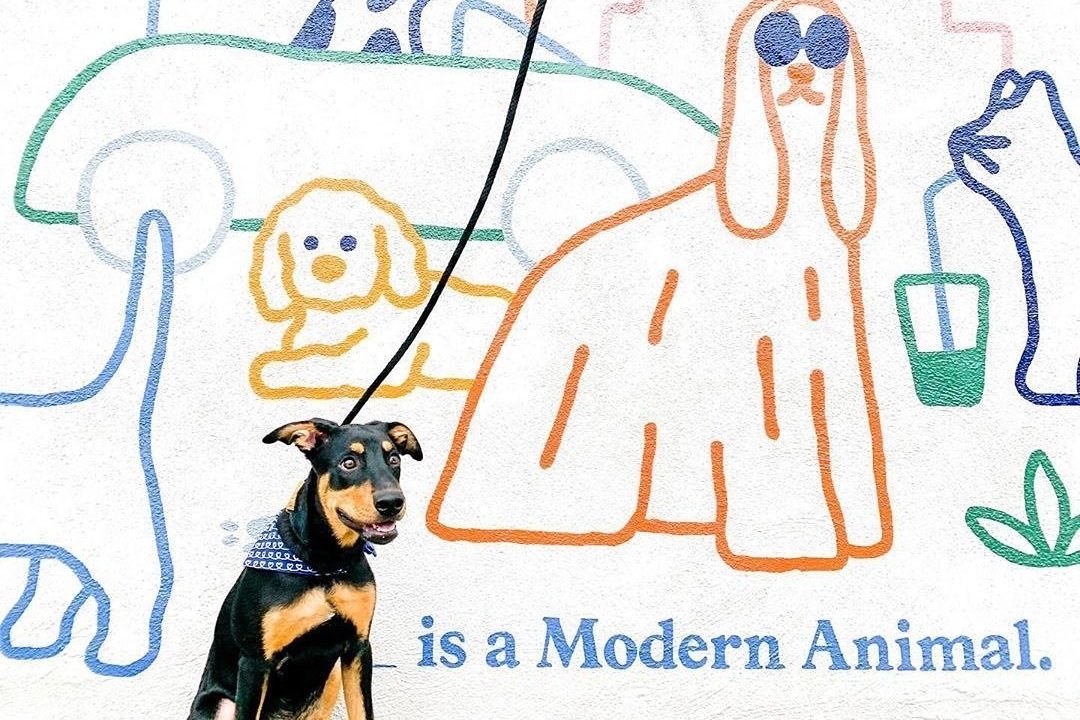
It’s not new news that pets are big business these days. Post (or should I say mid) pandemic, we’ve all gone pet crazy (this author included).
According to the 2021-2022 APPA National Pet Owners Survey, 70% of US households own a pet, up from 56% in 1988, and the global market for pet care is predicted to reach $241.1bn by 2026. Serving this growing market of new pet lovers is an influx of challengers bringing something new and improved to the world of lovingly pampered cats, dogs, guinea pigs and goldfish; insect and plant-based food brands for sustainably-minded owners, subscription services for gourmet treats and flea treatments, tech-enabled collars and coordinating leashes, the modern pet lover is spoiled for choice.
Modern Animal is one of this new breed of next-generation challengers bringing a tech, design and people-first approach to the world of veterinary services. Founded by Steven Eidelman in 2019 after selling his previous start-up, pet wearables brand Whistle, to Mars for $117m in 2016, Modern Animal sets out to be ‘the first human-focused veterinary company’. While still small, with currently four locations across LA, a recent funding round (totalling $89m to date) is fuelling plans for rapid expansion, with around a dozen locations planned across California in 2022.
Crucially, at a time where competition for pet healthcare professionals is high, the brand’s stated mission ‘to better the lives of animals by building a place that’s better for all of us who love them’ is not just a promise to the pet-owner, but also to the vets themselves. Stress, long working hours, emotional drain, and burn-out has become commonplace, so to fix the ‘broken industry’ Modern Animal makes a clear promise to prioritise employee wellbeing; designing the working environments ‘behind-the-scenes’ to be as comfortable and beautiful as the waiting rooms out front, providing tech solutions to make tasks efficient and easy, and making a commitment to inclusion and diversity in what they refer to as the ‘whitest profession in America’. As Eidelman puts it, the holistic approach to progressing the category isn’t just about the pretty pastel locations, but from challenging at all levels:
Our goal is to build a better, more sustainable career for veterinary professionals and a better, more human experience for pets and their owners by examining every nook and cranny of the industry and fixing any problem we can find. (Modern Animal press release, PR newswire)
And the approach seems to be working. You might think that opening your first bricks and mortar location in April 2020, during the pandemic lockdown, doesn’t sound ideal. However, despite the restrictions, Modern Animal’s addition of 24/7 telemedicine consultations helped the brand to survive and thrive since its launch. While members still pay for any services needed, a membership fee covers all consultations in person and virtual, lifting the barrier to getting preventative issues checked out early, and soothing the 3 am panic moments for the influx of new pet owners. This combination of inclusive check-ups and convenient video calls means that in 2021 the average Modern Animal member made five visits to the clinic and around 40 interactions through the app – that’s a hell of a lot more time than I spend with my vet. And why wouldn’t you pop in more regularly if there was easy app booking, a comfortable and soothing waiting room and a cold brew coffee while you wait – if it was in my neighbourhood, they’d be sick of the sight of me.
Modern Animal isn’t the only next-gen challenger in the category. If you’re in New York, you have the choice to take your pride and joy puppy to Bond Vet (currently with 10 locations) and Small Door (3 practices with plans for 25 by 2025). We might find that one of these challengers wins the battle of the ‘lifestyle’ vets and dominates the category, or stick to their coasts as more-niche local chains. Currently, these new start-ups only make up 1% of the 28,000 veterinary practices across the US, but that leaves a lot of room for growth, and this new breed of first-time pet owners not experienced in the ‘status quo’ of traditional vets may fuel a shift in the category as a whole.
Whatever happens, we expect to see more from this contemporary approach to challenging service categories through ‘designification’; the combination of comfortable and design-focused environments with tech-enabled convenience (something we’re also seeing in human healthcare), as consumer and employee expectations rise. In the future, it might not be immediately obvious if you’re at the coffee shop, the vet or the proctologist; just try not to get the appointments mixed up.
Thursday — for knowing what to sacrifice
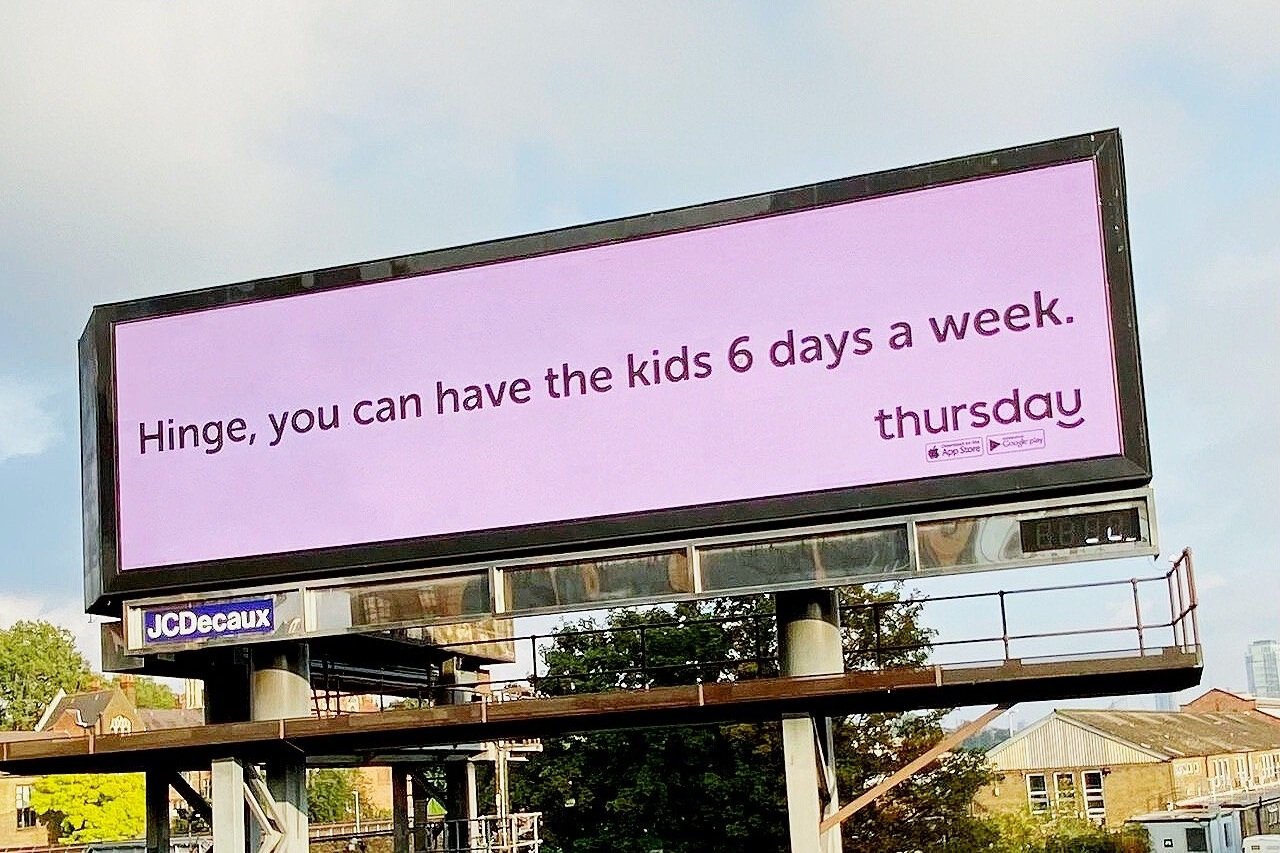
Thursday combines witty observations of dating in your 20s, talk-worthy marketing stunts and authenticity to bring a new dating experience to life — but for just one day of the week.
It’s a dating app that users can only access on a (you guessed right...) Thursday, and it launched into the already saturated dating category with a big pink bang in May 2021.
Founders Matthew McNeill Love and George Rawlings were frustrated with how the leading dating apps were used. Date seekers would scroll numbly for hours or waste hours of time messaging people before committing to a date - or worse, simply swiping for the hell of it and completely ghosting matches.
In their view, dating apps had made dating boring and were simply contributing to the already insane amount of time we spend glued to our screens each day. Matt and George’s single friends had told them that they were reluctant to risk wasting their precious weekends with potential dud dates, so for them, Thursday was the best day to meet up with a potential lover over a pint. For Matt and George, it seemed like a natural opportunity to sacrifice six days of the week and overcommit to Thursdays.
Thursday is a gamified way of arranging a date. Users can only match, message and meet their potential dates, reinforced by a countdown looming before their potential perfect match disappears forever. It’s an approach that keeps users on their toes and encourages them to get out there and meet people, leaning into a “F*** it, why not?” mentality of frustrated early 20’s singles, who feel as though they’ve lost some of the best years of their lives to the pandemic. “For us, it’s not about keeping people on your product,” Matt McNeill Love told the Breaking Social podcast. “It’s about using tech to get people off your product”.
Thursday appears to have grown authentically and effortlessly. But, they have artfully crafted their challenger brand by knowing the mindset and expectations of young city-dwelling daters. How?
They know where to place their brand
Most of Thursday’s viral activity sits on Linkedin and on meme accounts. While this might seem like an odd balance of platforms, they create prime fishing areas for early 20’s/30’s urbanites. “Going viral is the dream,” Matt McNeill Love said. “You hit a reaction in someone that is so relatable they want to share it with their friends”.
They embrace constraints
From taking a projector onto a London tube, to getting an intern to hold up a cardboard sign attached to balloons outside Liverpool Street station, the Thursday team show their boldness and not-too-serious take on the world of harsh messaging we have lived with during the pandemic.
They’ve created a community based on a clear mindset — Spontaneous Singles
Thursday recently launched real-life events called ‘Thursday After Party’, where only users and single people are able to join. Their first few events in London and New York were such a success they had to find ways to open other venues for more parties that same night.
They have a clear point of view and project this into the world
Thursday believe that ‘there’s more to life than dating apps’ and they project this belief in everything they do. From turning off the app for six days of the week to creating those real-life events, Thursday poke fun at the mundanity of the swipe, scroll and spaced-out approach to dating we have become comfortable with.
So what’s next?
Matt has talked about Thursday’s ambition to be playing ball with the big three dating apps, Hinge, Bumble and Tinder. I have no doubt that this year they will reach that goal if they keep impatiently pushing the category forward.
Tru Earth — for progressing the laundry category
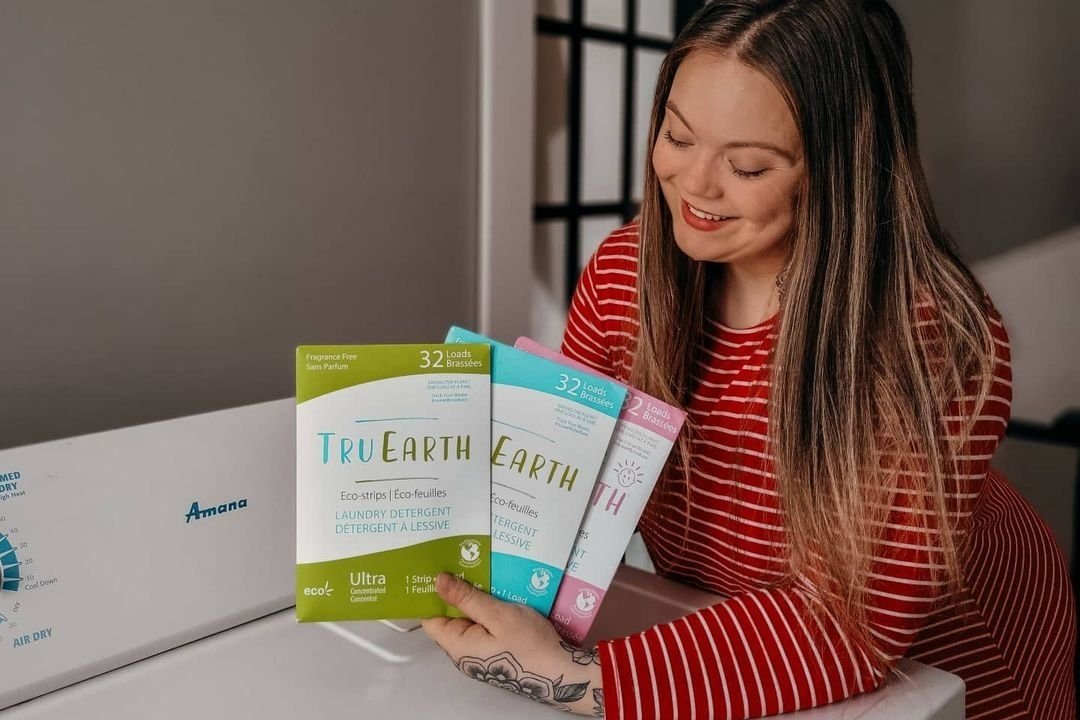
When a trio of entrepreneurs were first presented with zero-waste eco-strips as a new business opportunity that promised to change the way we do laundry, they were doubtful.
Could little strips of paper really clean clothes? But, trial turned skepticism into enthusiasm, and the seeds of a laundry revolution took hold.
Using a subscription-based business model, Tru Earth launched in April 2019 with a target of selling 150 subscriptions in the first month. When they sold ten times that, they figured they were onto something.
By the end of the following year, Tru Earth was the 2nd fastest growing start-up in Canada and, by the end of 2021, the 71st fastest-growing company in the world. They ramped up quickly from 7 employees to 230, and their products are now sold in over 65 countries.
Each 4”x2” highly concentrated, pre-measured Tru Earth strip cleans one load of laundry, completely dissolving in either hot or cold water. Shipped in compact, compostable cardboard packaging, they reduce shipping emissions by 94%. In addition, they are paraben and phosphate-free, hypoallergenic, vegan and biodegradable. And when Tru Earth isn’t busy upending the laundry industry, they are giving back to communities. For every first-time subscription purchase, 32 loads of laundry are donated to organizations in need across the globe.
Like all challengers, Tru Earth aims to progress the category. They may be leading the way, but as CEO Brad Liski says, “I dream of a day where all the big creators of detergent turn off their laundry jug assembly lines and switch to this method”. In challenger terms, Tru Earth is a Missionary. For them, the business is the mission. As Brad has shared, “the key performance indicators that drive our company are not profits and revenues, they’re jugs and donations. How many jugs can we save from landfills and oceans? And how many loads have we donated to those in need?”.
Tru Earth rejects the idea that environmentalism is an all or nothing proposition. Instead, they live by their mantra “small hinges open big doors” and meet consumers where they are. They inject new emotions into an often strident space, bringing a healthy dose of humour and even sparks of joy to never-ending wash cycles. Laundry detergent that seems to magically show up in your mailbox each month? No more messy spills to clean up? And more space on top of the washer where folded clothes can sit for days? Sign me up.
Two years into their mission, Tru Earth has saved over 6 million jugs and donated over 10 million loads to families in need. And they are just getting started. In 2022, they are focused on tripling those numbers and moving beyond the laundry room to offer similar products for the kitchen and bathroom. If they are successful, mothballed laundry jug assembly lines may be less dream and more reality. Then the question will be, have they built a strong enough brand and a loyal enough fan base to hold their own in the brave new world of zero-waste laundry?
Manner Coffee — for accelerating a new national ritual

Around the 19th century, the price of tea in China was a fervently discussed subject for the British House of Commons. Its ferocious trade, and tightly controlled markets made it a hot topic, to the extent that to ask someone ‘What it had to do with the price of tea in China’, was the ultimate snub indicating you thought their comments entirely irrelevant. And whilst this diss may have faded into obscurity, the epic rise of the Chinese coffee market may be a suitable modern-day update.
Manner coffee has proved to be one such brand, pouring its challenger spirit out to the world at large. Founded in 2015, Manner almost came to a bitter end when its first store in Nantong (南通), a prefecture-level city in south-eastern Jiangsu province, proved unsuccessful due to the lack of existing coffee culture. Unperturbed founder Han Yu and his wife relocated to Shanghai, in true David vs. Goliath fashion, to compete in the most densely populated coffee-shop capital of the world. In a 2-metre square kiosk sandwiched between a building entryway and shop, the odds were stacked. In fact, it’s reported that some national media outlets likened it to the ill-fated cupcake shop of the American sitcom 2 Broke Girls.
Despite this alleged roasting, Han Yu’s caffeine dream came to bloom. In its third month, Manner was selling hundreds of cups a day, and it tentatively expanded across the next two years to eight stores. Today with more than 300 stores in mainland China and an incredible $4.5bn valuation, Manners’ alchemic blend of product, processes, and culture are clearly leaving a pleasant taste.
The brand’s tagline ‘Good Coffee, made in China’ embellishes the cups and the doors of its head office. In the early days, all the coffee beans for Manner were hand-picked and roasted by Han, with growth this turned into opening a roasting plant that Han still regularly visits. Unlike many established chains (both Western imports and native incumbents), Manner uses semi-automatic coffee machines, requiring a much higher level of skill to operate. This, in turn, was the seed for its barista training centre, and Manner baristas go through several months of training, a practice unheard of in China. The salary of a general manager at Manner is notably higher than those of Starbucks, and apprentices are recruited with the sole experience requirement of “Enthusiasm for coffee”.
However, Manners’ most interesting challenger tenet is perhaps not in its humble beginnings or local-gone-global love story, but in its strategic deployment of collaborations and content-commerce. To be clear, the power of the collab is not some quiet trick of marketers in the know but a fundamental pillar of brand expansion in the Chinese market. Yet Manner has hit the consumer sweet spot by teaming up with suitably young and buzzy friends, with a mid-to-upmarket lifestyle aspiration factor, that artfully build out the Manner universe.
Take their collaboration with Neiwai, for example. Though its execution was simple (a limited edition of drinks and mood-setting video encompassing both brands), it is also a fellow Shanghai-born challenger, with body positivity and diversity at its core. Like Manner, it lives the ethos of going against what’s expected of the category.
Another dynamic pair up saw lifestyle store Beast (florist turned home textiles, furniture beauty, fragrance store) create a bespoke collection for its Panda Puff perfume launch. The Panda Latte incorporated notes of the perfume’s scent profile and its sky blue colour theme. It also came with a miniature bag with a tiny sample of the fragrance inside and converted one Manner store to a BEAST-branded panda theme, proving immensely popular with fans. This kind of multi-sensory activation is both a far cry from the category standard and the broader market norm of relying heavily on Idols and KOL’s. The Manner world and its friends within are considered and reflective of their values, not a mere numbers-driver.
However, the best embodiment of a values-led collaboration is with Manners’ crossover with Ullens Center for Contemporary Art. When China’s largest-ever show of works from Andy Warhol came to debut, Manner formulated a special-edition Banana Latte (and themed cup holder of course) to publicise the show and add yet another layer of merch-tainment-esque virality to the collection. These small moments of surprise and delight have created a big impact for Manner, and Warhol’s eternal wisdom is certainly not lost on them – “You need to let the little things that would ordinarily bore you suddenly thrill you.”
DeadHappy — for being bold in talking about death

In a UK market that has declined an average of 6% each year of the last five, Deadhappy’s reported growth in 2021 is not the only thing defying category conventions.
That’s because DeadHappy has radically rethought everything about the business it’s in. Its revenue is generated through selling Life Insurance, but at the core of its identity is a deeply embedded mission to change the way we think about death and after-life planning. Not just the cultural mores at play- the hushed tones, the lowered eyes, the deeply awkward desire to avert and avoid - but how we step up to it, think about it, talk about it – and ultimately, how we die responsibly.
Having closed out December 2021 having raised $7.08m of Series B funding, we sat down with Ed Edwards, Head of Brand, and Lucy Holton, Head of Growth at DeadHappy, to tell us more.
‘People don’t want to mention death — and we don’t want to force people to confront death. But we do want to make it easier for people to understand that there are things that they can do to help them plan for death,’ shares Edwards. ‘Understandably, the traditional Avivas of this world go for shock tactics, it’s scary,’ adds Holton, ‘For example, every day 66 children in the UK lose a parent who doesn’t have financial protection in place’. With over 8.5 million people in the UK who don’t have life insurance but should, there is a £2.4 trillion estimated protection gap- and that’s what DeadHappy is here to help fill.
Born out of the Founder’s very personal frustration with trying to buy his own life insurance, that restless attunement to thinking about things from the customers’ point of view has shaped the business’ mission and character from the inside out. DeadHappy is the picture-perfect example of marrying a genuinely compellingly different challenger product proposition with a point of view about the world at large. Offering an alternative to the complex, inflexible, dour category of old, you only need to take a glance at their Seedrs pitch to see how they are turning everything on its head.
Flexible, affordable, (and dare they say it) enjoyable, DeadHappy is a great illustration of a new kind of next-generation challenger, not only in terms of its accessible brand style, but in the way its foundational de-positioning of what has gone before is built into the very fabric of the offer. Their Deathwishes are a perfect example of that. Most people have no idea how to go about planning or working out what to do to plan their after-life care, but the Deathwish platform makes it simple. Whether you want to pay for a loved one’s education, or turn your ashes into a diamond ring to add to the family treasure trove, DeadHappy have laid out the most absurdly elegant tech and light-hearted tone to help you compile your list of wishes and get a policy in place to support that.
In a world where brands are terrified of getting cancelled, DeadHappy is bold in talking about death, but it is not a flat-footed Irreverent Maverick of old. They are constantly testing and learning and building a culture that is resilient and ready to engage with the debate it sparks. ‘We have to be careful’ shared Edwards reflecting on their delicately honed tone and behaviours, ‘We don’t want to offend people; we do care about people. But it gets tricky at times, so it’s really important for us that we offer a mix of the funny and the profound…. it ultimately should be life-affirming’.
There is so much to say about this company: from their values and behaviours that relentlessly move the category forward, to how they’ve nurtured a culture that lives their mission from the inside out (their first value is ‘you are not a child’, which they have emblazoned in the toilets at HQ). From how they structure the business, to their Happiness Honchos, technology development and their phenomenally refreshing adverts, everything this business does is rallied around its mission to change attitudes to death, and I can’t wait to see what they do next.
Illuvium — for making gaming pay
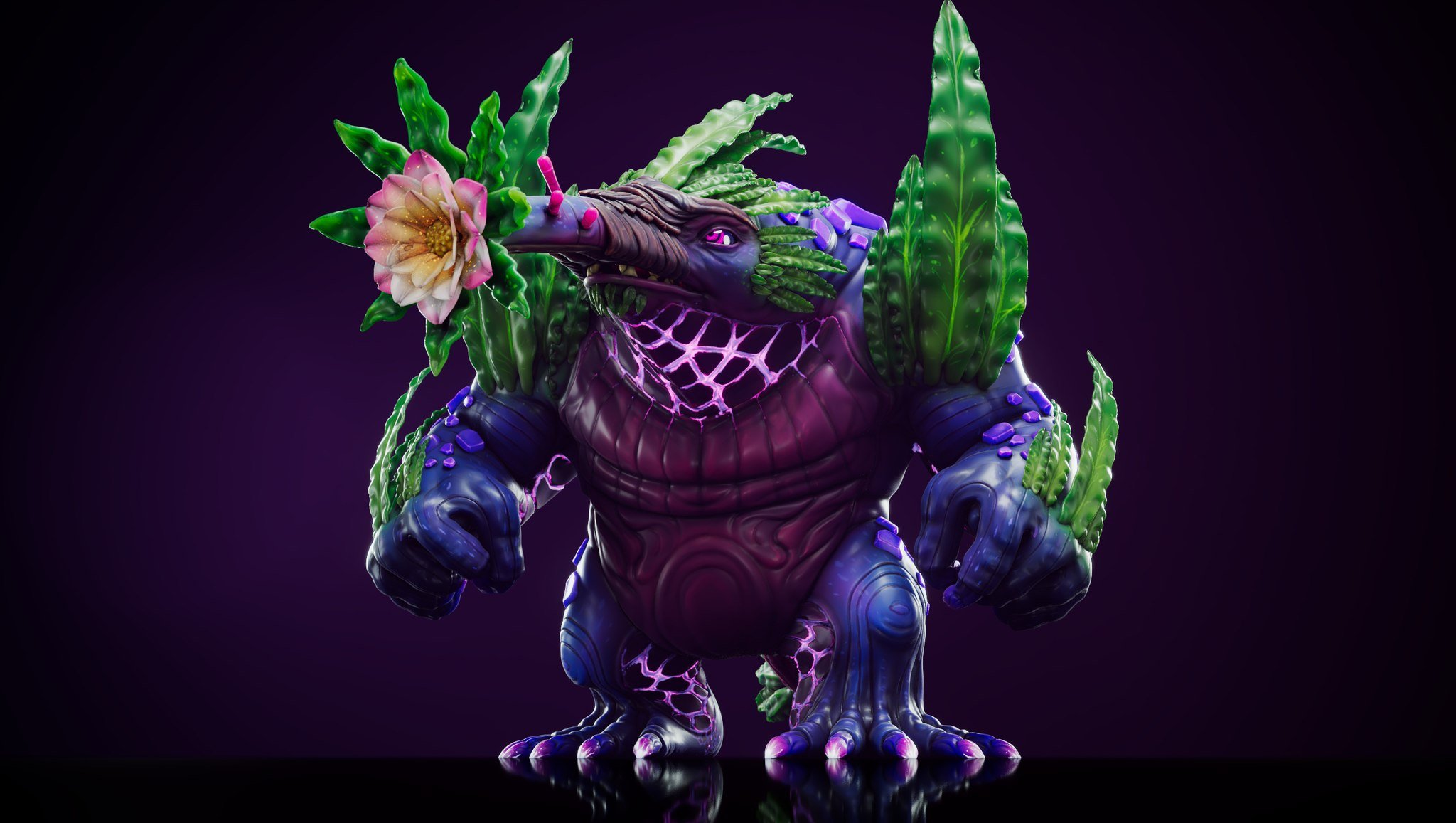
Parse the jargon and hyperbole on “web3”, and you end up with a whole lot of weirdness and yet another set of issues that seem to divide the world.
Take NFTs in gaming. Electronic Arts’ CEO describes blockchain games and NFTs as “the future of our industry”. While Valve says, it won’t entertain any of it. And Xbox’s Phil Spector says it’s potentially “exploitative”.
Gamers themselves are unconvinced. For example, when Ubisoft Quartz launched with Digit NFTs (to be fair, a mostly cosmetic web3 offering), PC Games magazine described it as “snake oil”, and 38,000 gamers gave the launch video a resounding thumbs down. After years of enduring in-game micro-transactions, loot crates, and battle passes that often come at the expense of game progression, gamers are understandably skeptical of anything that smells like new ways to monetize their time spent.
The so-called “play-to-earn” model—where gamers earn and own crypto and NFTs by playing a game—messes with this equation as gamers own what they earn and can trade or sell it as they see fit.
Axie Infinity, a game where cute, Pokémon-like Axies battle each other to earn AXS or SLP tokens, has well over a million daily users and made its Vietnamese parent $343m in fee revenue in a single month in 2021. Fifty per cent of Axie’s daily users are based in the Philippines, where a committed player can earn 5-10x the average daily wage playing the game and make it their livelihood. Critics say Axie Infinity is more a pay-to-play model as players must buy game characters to get started, but clearly, many gamers are sold, and a new kind of financial services sector has sprung up to lend the seed capital that helps new players quickly level up — some players have even bought apartments from proceeds. Believers see this new model providing millions of “jobs” in the developing world in the future. Like I said, weird. Meta, in fact. But it’s this share in value that differentiates play-to-earn from typical Web 2.0 (Big tech social media companies) who extract all the value and keep it for themselves.
Enter Illuvium to pour gasoline on this trend. It’s the first AAA quality game in the play-to-earn space, built on the Ethereum network. It’s both a role-playing and auto-battler game that uses Unreal Engine 4 to deliver the kind of cinematic quality and 3D effects that mainstream gamers demand — and Axie Infinity lacks. In exploration mode, players hunt, capture and fuse together deity-like creatures called Illuvials, which are NFTs players own. Then, players take their Illuvials into the auto-battle mode, where they fight alongside their Illuvials against computer opponents and other players to make progress in the game and earn ILV tokens. In Illuvium, the NFT is not simply a financial reward for playing but is a game asset that grows in value while directly affecting the ability to progress in the game — it is an integral part of a better gaming experience. The player who discovers an Illuivial owns that Illuvial, verified by the blockchain. Illuvials can then be traded for strategic advantage or even actual fiat currency within the game’s exchange.
Illuvium is being run as a decentralized autonomous organization — the Illuvium DAO will give a strong voice to players in policy and procedures via the election of an Illuvinati Council. Players have both a financial stake and a say in how the Illuvium ecosystem and economy is run. This more clearly aligns incentives between the development team and community and, presumably, is what will protect the game from the kind of egregious monetization or other nefarious acts that might dog a publicly-traded gaming company under pressure to maximize shareholder return. This redistribution of power is a crucial feature of a web3 operation and what makes Illuvium so fascinating to watch.
We’ll be looking to Illuvium to create both a shift in value and a shift of values within gaming.
Reflaunt — for taking circular fashion mainstream

Scientists at the IPCC warn us of the devastating trajectory we are on. Rising sea levels, melting glaciers, heatwaves and floods will affect billions of people in the decades ahead. McKinsey, a firm not usually known for being progressive on climate issues, says that “a fundamental transformation of the global economy” is needed to avoid the most catastrophic climate impacts.
Tweaking the existing hyper-consumption capitalist model won’t do and yet generally, that is all that we are seeing. The fashion industry is particularly guilty of this.
The clothing and textile industry is the world’s 2nd largest polluting industry accounting for 10% of global carbon emissions. In addition, 92 million tonnes of textile waste end up in landfill every year. Yet, in response, we see performative acts and marginal tweaking of behaviour in the industry. A multinational corporation will collaborate with a smaller sustainable brand for Earth Day or another states its aim to phase out the use of single-use plastic bags in its stores. Cute. But actions that only pay lip service to the idea of addressing the greatest existential threat humanity has ever encountered.
Resale, however, is one model with the potential to actually make a meaningful difference to fashion’s role in the frightening trajectory we are on. Extending the lifespan of products to have second, third, even fourth lives through resale, means significantly less water, energy, and resources are needed to manufacture and market new items and far less ends up in landfill. If accepted and adopted widely as a new normal, it could be radical in its effects.
Marketplace apps such as Depop and Vinted have had rapid success with a growing consumer acceptance and demand for second-hand fashion - Etsy bought the former for $1.6bn last year.
But the fashion industry — and society at large — is so entrenched in the consumption of ‘new’ that resale remains a concept that sits at the fringes of fashion, yet to challenge the industry status quo of fast, new and disposable.
But could that be about to change?
Founded in 2018, Reflaunt is a B2B software platform connecting fashion brands and retailers with the second-hand market. The company’s mission is to transition the fashion industry away from a destructive linear model of make, use, waste, to a sustainable and circular model of consumption.
Reflaunt’s technology enables consumers to sell unwanted items back to the brand they purchased them from through its in-house platform. For instance, a consumer purchasing a designer bag could sell it back to the brand via the same online store. Reflaunt’s technology, which is based upon the Blockchain, authenticates the item through a unique digital ID, and it’s then sold on via 3rd party marketplaces to find a new owner and enjoy a new life. The seller then receives cash for the resale while the brand and marketplace get their cut too.
Last year, the platform raised $2.7m in a pre-Series A funding round to expand its technology and business development teams. In August, Reflaunt announced a partnership with high-end department store Harvey Nichols, where customers could earn up to 80% back of the original retail price when they sold luxury fashion items back to the store via the service.
“Iterative improvements are not sufficient anymore, there needs to be a systemic disruption,” Stephanie Crespin, the co-founder, told the Oasis platform. “That transition from a traditional linear model to a circular one is complex and requires changes in the whole supply chain, the economic rationales and socio-cultural beliefs on which this industry was built.”
The potential of Reflaunt’s model is that it aligns the interests of retailers, consumers, sellers, second-hand buyers and the planet — who really wants us all to chill out and stop buying stuff. The model should incentivise consumers to look after their products to retain their value, and brands should be encouraged to make more durable products knowing they stand to benefit from future transactions.
Combining our desire for consumption with the demands that the climate emergency places on us is a fascinating and tricky conundrum for society. But Reflaunt somehow sits on the tightrope between these two seemingly opposing worlds. On the one hand, Reflaunt offers radicalism in its circular model and by championing a very different set of values and beliefs to the fashion industry of old. Yet, on the other, Reflaunt partners with, and is in service to, the mainstream Goliaths of the fashion world, helping them to change their wasteful ways — just a little.
It’s an impressive balancing act. For humanity’s sake, let’s hope they can stay there.
Oja — for delivering global, local
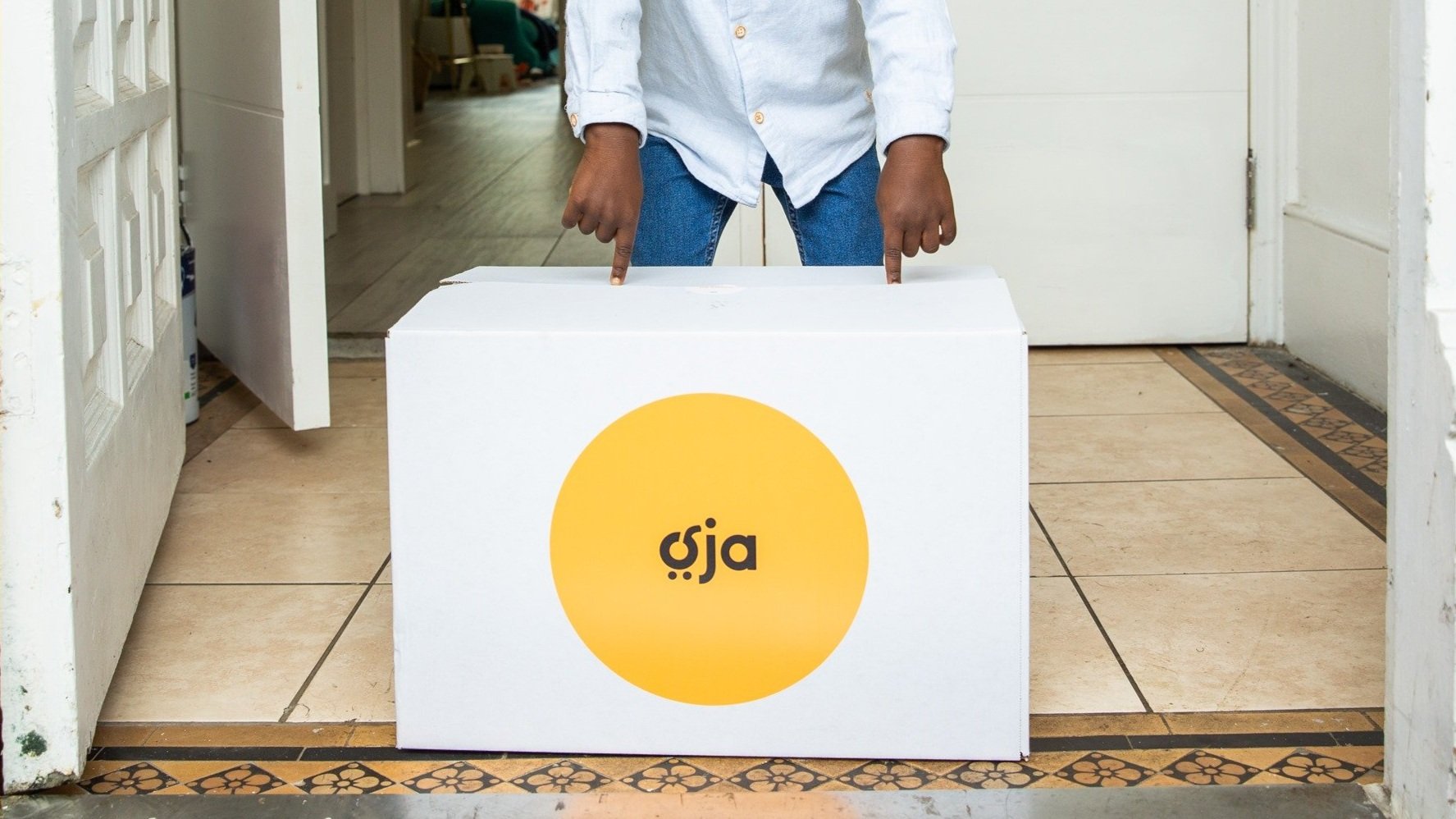
Grocery is by no means a category short of disruption, or investment. Venture-backed grocery companies raised over $10bn of funds globally in 2021, with new entrants seemingly arriving as quickly as your next pint of milk.
‘Whoosh’, ‘Zapp’, ‘Jiffy’, ‘Door Dash’, ‘Getir’ (which abruptly translates as ‘bring’) — the latest wave of rapid grocery startups share one mission — speed. But London-based Oja has caught our attention by championing something that goes far beyond this category obsession.
According to founder Mariam Jimoh, Oja’s mission is to radically reshape grocery “by making foods from all cultures easily accessible from anywhere in the world.”
Cultural groceries are hugely under-represented. For many, cooking a meal that reminds you of home requires a trip to an ironically limited ‘World Foods’ aisle, an out-of-town wholesaler or a speciality grocery several bus rides away – or sometimes all three.
Oja, which means ‘market’ in Yoruba, was born out of this frustration. With a recently re-launched app and website, Oja’s platform provides a culturally specific shopping experience with groceries spanning everything you need to make a meal that reminds you of home - with the focus at launch on African and Caribbean groceries.
The brand is built around three pillars – familiarity, culture, and connection - a far cry from the brash speed and convenience that characterise their competitors. The option to shop ‘bundles’ (reminiscent of those your mum might send you home with), the question ‘what are you cooking?’ that accompanies a fresh meat order to make sure you get the perfect cut, and the familiar tone they use to talk about food (“*that” Fanta - if you know, you know”) all make Oja an inviting place to want to spend time.
Founded in 2020, the company is at the beginning of its journey, and with limited resources for marketing at this early stage, it’s no surprise that its sense of community is what currently drives demand. A recent trial saw 56% of growth from word-of-mouth alone, and Oja’s smart micro-influencer strategy on social media creates a sense of community.
The startup received $3.4m in pre-seed funding at the end of 2021, and with U.K. e-commerce grocery sales set to increase by around 50% to $63bn by 2025, there is certainly space for a brand like Oja to inject some heat.
But much as Deliveroo’s mission to ‘bring the best local restaurants direct to people’s doors’ has been somewhat eclipsed by a war with Just Eat for the best KFC bucket deal, we’ll be watching how Oja retains its sense of close community as it grows.
Olive — for next-generation shipping
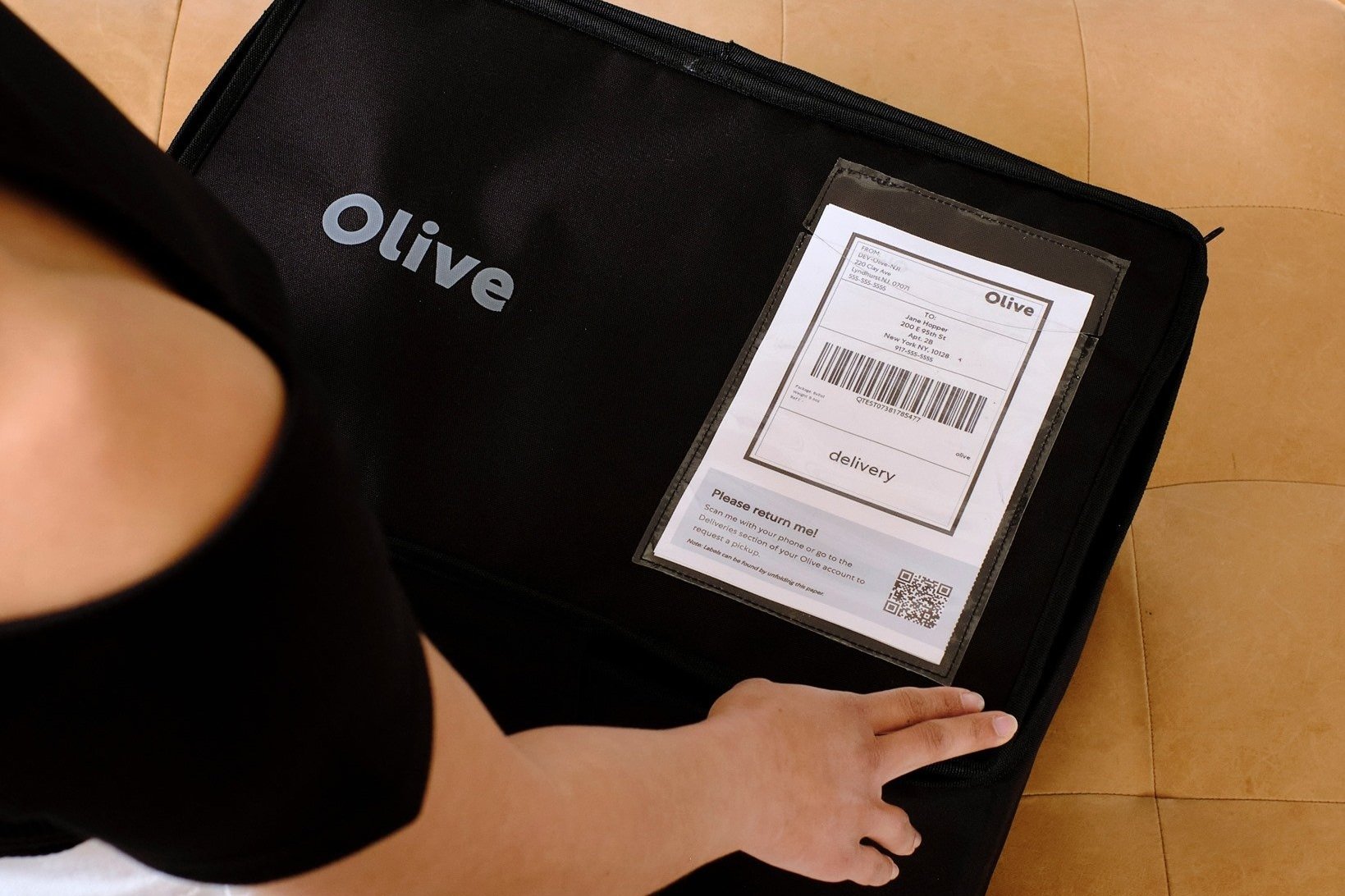
Let’s take a straw poll. How much packaging from deliveries is in your house right now? How does that compare to two years ago?
I’m guessing the answers to those are something like A) a lot and B) much more.
And that isn’t surprising – the pandemic has just exacerbated a shift towards e-commerce that has been a decade in the making. This is a shift not many people – and virtually no brands – have questioned, until Olive.
Founded in February 2021 by Nate Faust (co-founder of Jet.com, a Challenger to Watch from 2016), Olive is on a mission to reshape the entire home delivery supply chain in order to get rid of single-use packaging.
This is clearly an enormous task. Not only are supply chains extremely complex and difficult to change, but it also sets them in direct opposition to the e-commerce giants who have no interest in changing a system that works perfectly well for them.
Olive is going up against Goliath – so they’ve picked up their slingshot. Rather than competing on the industry’s terms, Olive has used a Next-Generation narrative to position these supposedly cutting-edge technology companies as behind the times and redefined what convenience means for home delivery.
E-commerce has always been about speed, with businesses both big and small in an arms race to slash delivery times from 5-10 business days to as little as 10 minutes. All the while training consumers that faster = better and sweeping the nasty ethical and sustainability implications of that speed under the rug.
But while that may seem like an incredible amount of change in just the blink of an eye, Olive shows us that the way items are delivered and returned hasn’t actually changed at all in the past 25 years – a lifetime in the world of tech. So they are here to change the criteria for choice from simply speed, to something more efficient, sustainable, and convenient for both customers and businesses.
Free to customers (businesses pay commission on every order), Olive provides consolidated deliveries from over 100 fashion & beauty retailers – anything you order comes on a pre-determined day, in one re-usable box. Need to make returns? Just pop them back in the box to be picked up again.
While Olive is still a long way from making a dent in their goal to remove single-use packaging from e-commerce (retailers still send items in traditional packaging, and Olive just re-boxes them to send on to consumers), what is notable is both their ambition to go up against the status quo and paint a different vision of what progress looks like, and the speed at which they’ve been able to do that. With hefty investment behind them, they’ve been scaling rapidly since launch.
They’ve shown that ‘sustainability’ businesses are no longer a niche venture. And they don’t require the trade-offs we might think.
It’s time that the e-commerce big fish sat up and took notice.
Haeckels — for being a genuine local hero
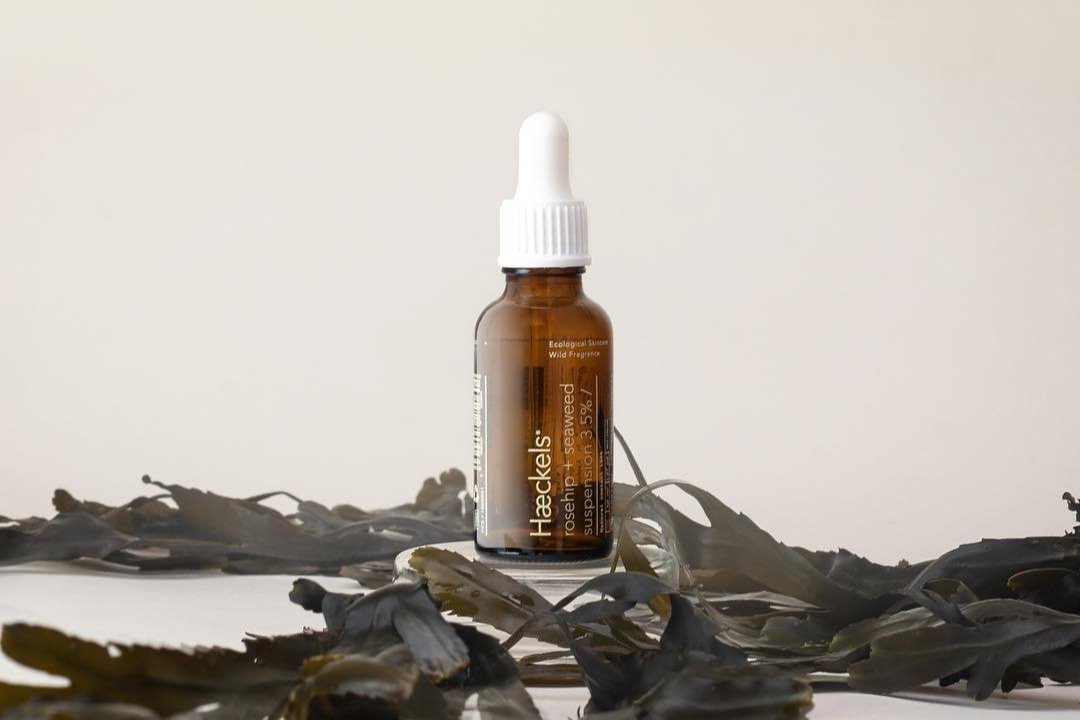
The cosmetic category — as with everywhere else — isn’t short of brands proclaiming their sustainability credentials. It’s clear which way the wind is blowing, and the link between doing good for your skin and the planet at the same time is an obvious one to make.
And that’s a problem for a brand trying to make a name for itself in this space. It doesn’t matter how serious you might be about sustainability or how much you feel the competition may be only paying lip service to the idea – there’s a powerful current drawing brands into a new sea of sameness that will see your story lost in the noise.
Skincare brand Haeckels has charted its own challenger course to ensure it stands out in this space. Importantly, the company frames sustainability through a distinctive and compelling narrative about place and identity.
They’re not a big international brand —they’re from Margate — a seaside town on the South coast of England, of faded Victorian-resort grandeur, now in the process of regeneration with a counter-cultural flavour.
And their locally grounded sustainability message isn’t just marketing tokenism – a trap the founder Dom Bridges is passionate about avoiding.
It’s just a plethora of crap out there claiming to be one thing that it most certainly isn’t,” Bridges told No Reply Mag. “It’s just branding, there are products out there that have all the same ingredients, but it’s just a different nice label and a different Instagram account. 80% of it is just total bullshit.
Margate is where Haeckels’ team walk the beaches to collect the seaweed and botanicals they use to make its products. It’s where the company draws inspiration for (even) less conventional products – like candles that evoke the smell of petrichor – (or to Haeckels, the scent of rain on dry coastal promenades).
And Margate is where Haeckels is re-investing the profits of its success, turning a dilapidated casino into a new and expanded base of operations – along with a beauty academy.
Margate has even informed the company’s commitment to a more sustainable delivery chain. As Haeckels has expanded into London (reversing the conventional direction of travel), it’s taken to the sea to supply its new shop and spa – using a sail-powered sea barge to transport cargo via the Thames.
There are other notable elements to the brand’s story too – from a strong drive for transparency driving its choice of location for a new factory and HQ – so people can drop by to see how things are made, to being very open about its production process and percentages of ingredients in each product (complete with Wikipedia links for the curious).
And Haeckels has found a more crafty, approachable take on science — from the laboratory glassware in its shops (distilling purchasable product) to grown to order products (and packaging) complete with your own petri-dish to make the final preparations.
And of course, everything is designed beautifully.
So why watch Haeckels in 2022?
Well, as the business continues to grow (now in 40 markets and counting), it will be interesting to see how the brand maintains the sense of place and identity that has set them apart when it can no longer rely on its audience’s implicit understanding of what that means. What’s the attraction of a product inspired by Margate’s Dreamland, for instance, when consumers don’t understand the reference?
Perhaps Haeckels’ sense of place and identity, acting as an internal lighthouse to navigate by, will be enough — the company certainly isn’t short of the creativity to make it one to watch as it explores new shores.
Sway — for questioning how we wrap things up
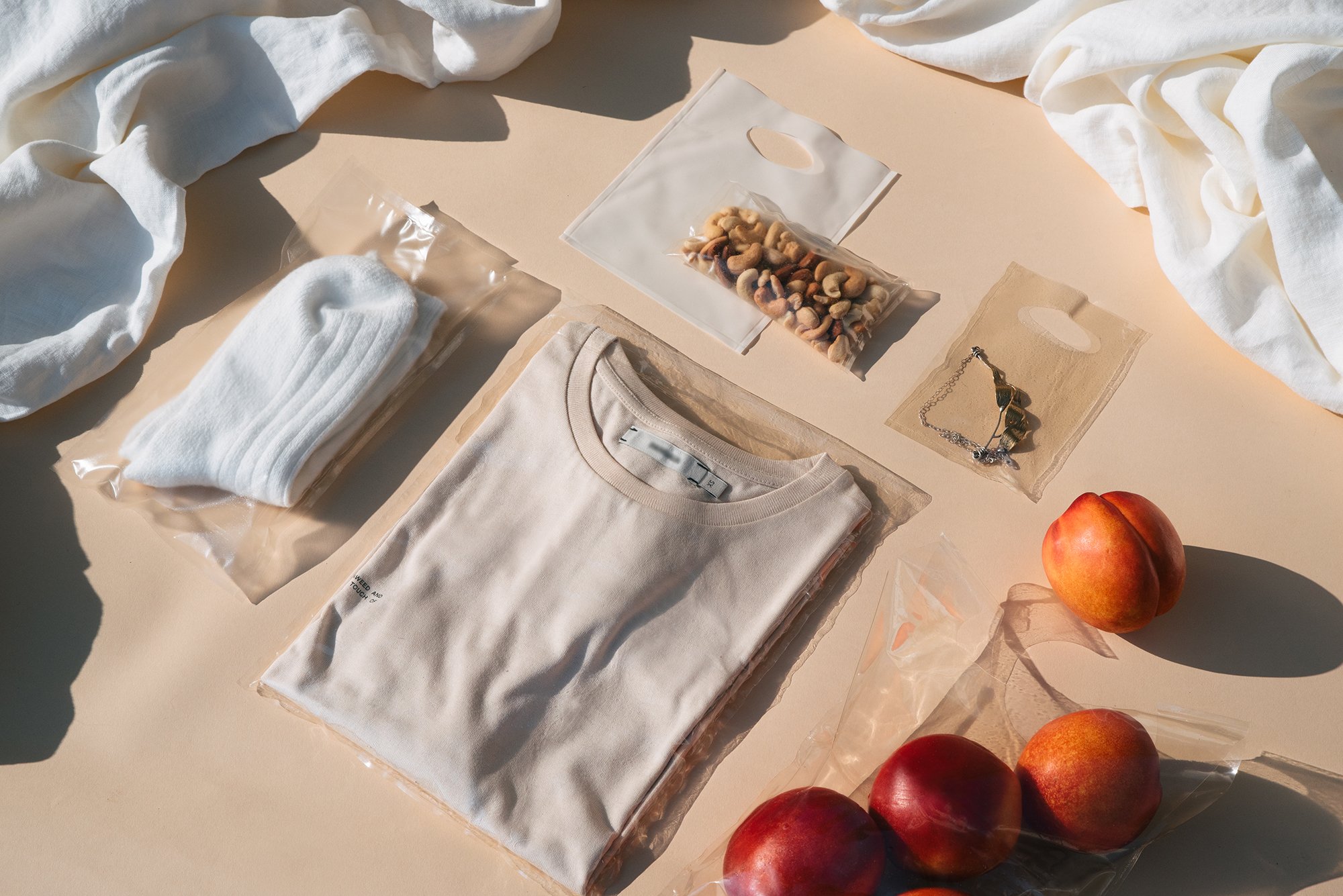
What if our waste was regenerative rather than destructive?
Navigating through the pandemic, I’ve noticed I’m taking a slower and more conscious approach to my consumption habits. As I pack my shopping and unwrap my food, I am increasingly aware of the impact of how I live, what I order, and the energy and waste I create. Consumers like me are becoming more sustainability-minded, and the good news is steps are being taken to reduce our packaging waste at a governmental level - as Reuters reports in The Plastic Pandemic ‘last year 127 countries have adopted bans or other laws to manage plastic bags.’ However, the Guardian reports that we are hitting the point of no return of chemical pollution, and as Greenpeace’s campaign, Wasteminster: A Downing Street Disaster, dramatically highlights, 1.8m kgs of the UK’s rubbish is exported to other countries every day. The uncontrollable levels of waste we produce is an urgent issue that needs dramatic solutions.
Meet Sway, a next-generation challenger ‘on a mission to replenish the planet through regenerative design’ by offering an innovative alternative to single-use plastics. Julia Marsh, the Co-Founder and CEO, was inspired to undertake materials research by her early life living on the coast, where she saw the damage that plastics had made to the beaches and coastal land of California. She began to develop better compostable alternatives to plastic, experimenting with regenerative materials that included ‘mycelium, scoby, microalgae, agricultural waste’, ultimately identifying seaweed ‘as their game-changing resource that could entirely disrupt the plastics industry.’ Seaweed is a complex and beautiful thing, spreading and growing like a field but interlinked like fungi; it is already farmed across Asia, where it is used in medicine and considered a superfood. Sway’s process turns this natural wonder into packaging materials that are carbon-negative and able to totally break down at the end of their lifespan. As Fast Company notes ‘some plastic alternatives need to be put in industrial compost facilities or require acres of land for production. Sway seaweed packaging needs neither.’ This sets them apart from other recycling-based innovations as Sway’s products aren’t just reducing waste, they seek to positively benefit the environment.
The brand recently announced a $2.5m first-round seed investment led by Valor Siren Ventures ‘to support the development and piloting of compostable plastic replacements’. After being named one of the winners of IDEO’s Beyond the Bag Challenge last year, an initiative supported by big retail brands including CVS Health, Target and Walmart, Sway’s product will begin to appear in stores this year, including ‘initial pilots [which] will involve 1,000 to 300,000 retail and polybags starting in mid-2022’.
I was so excited to discover Sway and its regenerative approach. Previously I have only seen brands highlighting the ocean plastics issue through recycling in a limited edition collection or a fashion drop, such as the Adidas Parley Ocean trainers and Nike’s Space Hippie Mars inspired collection. But Sway isn’t a side project or one-off greenwashing campaign. And while the brand initially caught my attention with the creative communication of their big goals through their beautifully designed website and Instagram (I do love pink and orange), it’s not about the looks, but the idea. When an idea is so simple – that we should use readily available regenerative materials instead of harmful and finite ones, and the solution has been invented and is ready to become the norm, it feels like madness to keep doing things as we currently are. I hope this next-generation challenger changes the way we wrap things up for good.
Forest Green Rovers — for an off-pitch giant-killing
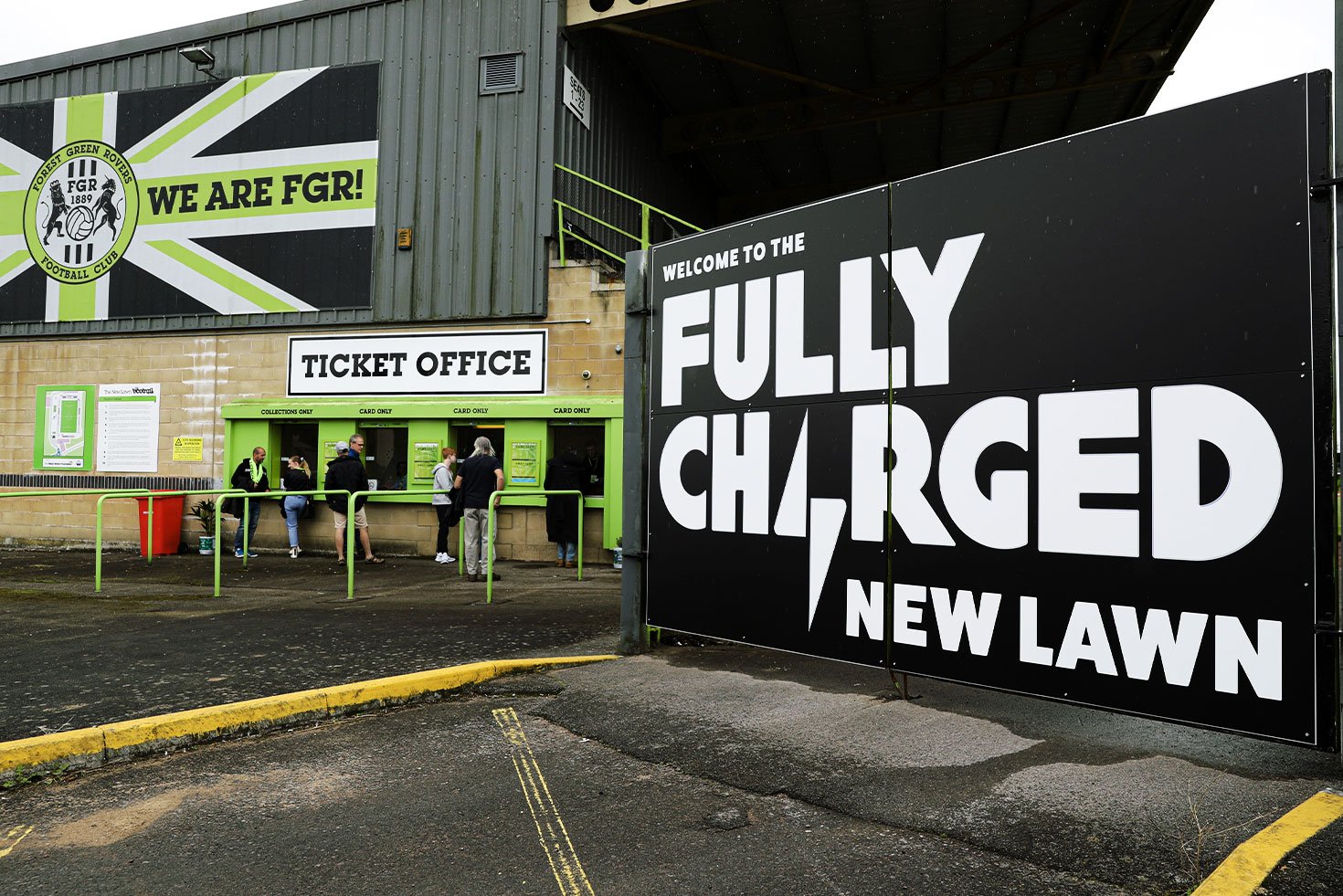
For all the negativity that surrounds modern football culture, Forest Green Rovers are showing us all how to make the beautiful game a sustainable one, too.
Ambition. Every football club in the world states how ambitious they are. Owners promise new signings, hire new managers and build grand stadiums hoping that their ambition will lead them to glory.
Invariably, this means football clubs are spending more and more in the pursuit of creating success last seen in their increasingly faded history.
Trying to outspend the competition to recreate the past is not the challenger way, though. Forest Green Rovers has a different kind of ambition. Whilst on-pitch success is one aim, the club is executing an environmentally sustainable strategy that makes it the most future-oriented football club in the world.
So why is a team playing in the fourth tier of English football a Challenger to Watch in 2022?
Founded in 1889, Forest Green Rovers are based in a slightly unremarkable town called Nailsworth in Gloucestershire, with a population of just 6,000.
Since entrepreneur Dale Vince took over the club in 2010, he has transformed the club’s fortunes, winning promotion to the Football League in 2017 for the first time, after over a century playing at obscure local and regional levels.
Whilst Vince wants to see the club reach the Championship (two leagues above where they are now) in the next few years, it’s how Rovers are changing perceptions towards environmental issues that has the football world looking at a tiny town in Gloucestershire.
Forest Green Rovers is the first-ever carbon-neutral football club, as certified by the UN, and FIFA has named them as ‘the world’s greenest football club’. Vince didn’t have a background in football, not usually a recipe for on-pitch success as an owner, but perhaps it’s this outsider status that’s enabled him to implement several fundamental changes to the club.
So what makes Forest Green Rovers so green?
For a start, Rovers is not owned by an oil-rich state looking to change public perception by affiliation with a football club. Instead, the club is owned by an eco-entrepreneur, Vince is the founder of Ecotricity, a renewable energy company.
Rovers play in football kits made from recycled coffee beans, and electricity generated by the solar panels on the stadium roof powers the stadium. Even the pitch is eco – it is 100% organic, irrigated by rainwater collected from the roof, and mowed by a robotic lawnmower powered by solar. In addition, local farmers reuse the grass cuttings to improve the condition of their soil.
Perhaps most remarkably, Rover is a fully vegan football club. All meals served to staff, players, and fans are plant-based. Getting die-hard football fans to go meat-free was initially seen with some scepticism, but the club reports that efforts have encouraged many of their fans to go vegan and the overall ethos has led to many supporters now considering purchasing electric cars.
What next?
The club has finally had the approval to build a modern all-timber stadium, designed by architect Zaha Hadid, that will allow Rovers to expand capacity if and when it’s needed. A further symbol of the club’s ambitious mindset towards sustainability.
Rover’s beliefs and values are also attracting a new breed of sponsors to the game – would the likes of Oatly, Innocent and Sheese usually sponsor a football club in the fourth tier of British football? Probably not. And demonstrating that alignment with these values isn’t coming at a cost to sponsors is likely to encourage other clubs to follow suit.
Forest Green Rovers is forging a path in football that few thought possible. In the near future, the team will travel in electric vehicles to an all-wood stadium, playing in kits made from recycled coffee grounds where they will be greeted by fans satisfying their match-day hunger with plant-based burgers and pies and carbon neutral beer.
The world’s biggest clubs are now playing catch up.
Bathu — for being Africa’s local hero sneaker
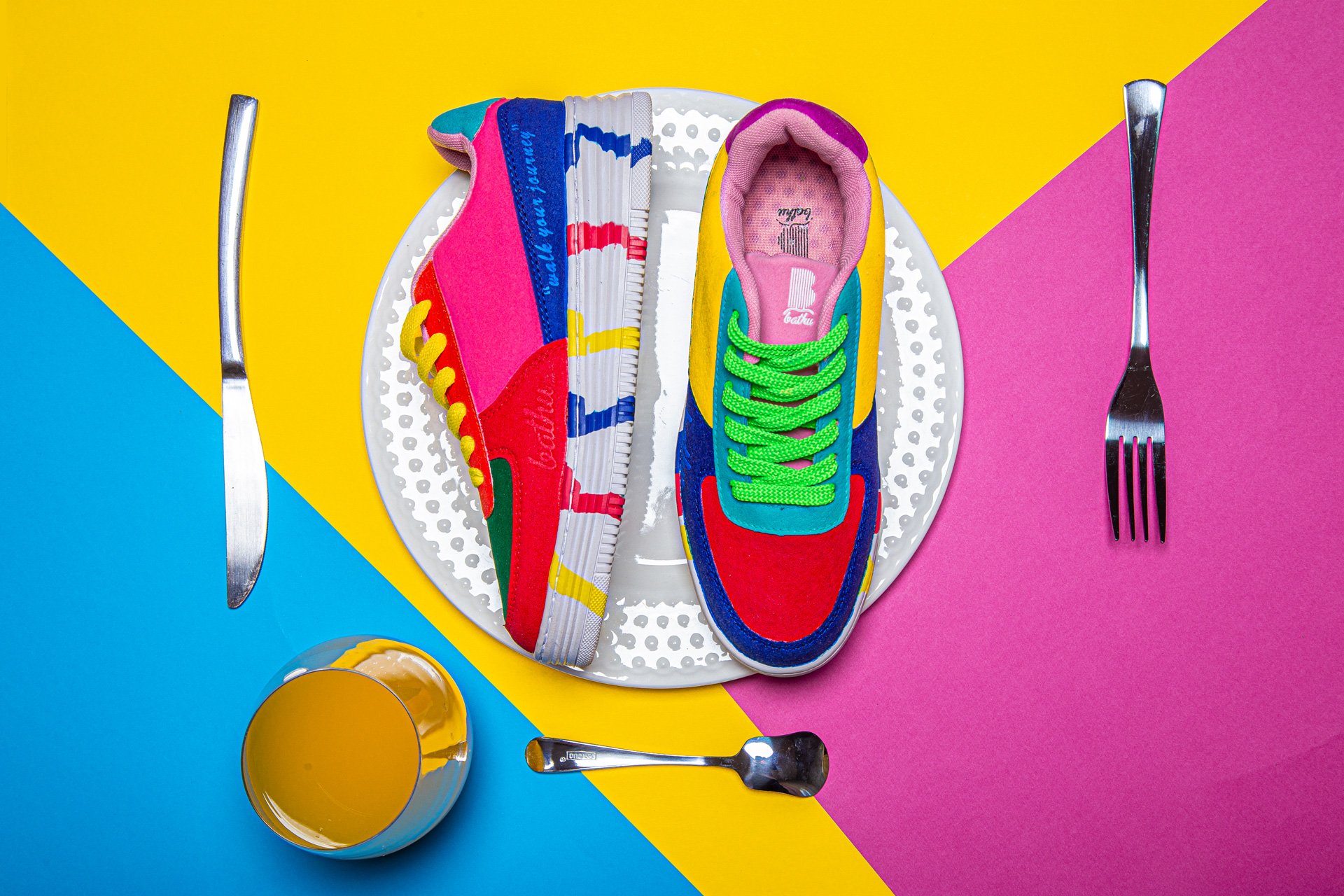
Bathu founder Theo Baloyi, a self-professed sneakerhead, asked himself why a homegrown footwear brand can’t compete on the international stage?
Asia has Onitsuka Tiger, Europe has Adidas, and North America has Nike. South Africa has a booming sneaker sub-culture dominated by the usual global giants. But Theo Baloyi felt a lack of connection with the global brands and set out to build an aspirational African sneaker brand inspired by the colourful and vibrant continent.
The heart of the brand
Bathu, which means shoe in South African slang, was founded in 2015. While the initial inspiration for starting the brand was to create a sneaker that would benchmark against the likes of Nike and Adidas on design, quality and style, Baloyi also wanted to play his part in addressing the socio-economic challenges in the country. As he put it, he wanted customers to know that “you are not just buying sneakers, you are creating jobs”. True to this intent, he’s established a platform called Bathu for Batho (shoes for the people) with a target of distributing one million shoes to school children. Bathu believes that we all have journeys to walk and wants to inspire everyone to do so with confidence.
Lacing up to compete
Having started the business in a small room in the township of Alexandra, Johannesburg, with only his savings to fund the business, Baloyi decided that to stay true to his intent he would own his supply chain end-to-end. So he bootstrapped the company and sold his first 100 pairs out of the boot of his car. The first sneaker launched by Bathu had a colourful mesh design, something entirely new to the market.
South African customers like to touch, feel and see products before they buy, so brick and mortar stores became key to Bathu’s strategy. However, Baloyi realised that many retail spaces felt quite similar, so he decided to build award-winning stores with designs as colourful and vibrant as the shoes they sold. To dramatise the experience, flagship stores also boast Customisation Labs, where customers can add their own unique flavour to their sneakers at no extra charge.
Both feet firmly on the ground
Bathu continues to draw inspiration from its context, evidenced in how they name some of the colours of their shoes: Egoli Gold (Johannesburg Gold), Mamba Green, Naledi Yellow (Star Yellow), Wakanda Black.
The brand’s authentic story has been the driving force behind the following it has built, resonating with the everyday person and celebrities who organically gravitated towards the brand and endorsed it for free on their social media platforms. Bathu has also landed numerous corporate collaborations (Opel, AB InBev) and continues to drive partnerships in its marketing campaigns.
Small steps and giant leaps
While many other retailers struggled during the pandemic, Bathu achieved top-line growth of 180% year-on-year, grew their omnichannel experience and delivery system and now have 30 stores nationwide. In 2021, Bathu ranked as one of the top 10 most admired African brands, and with the momentum it has built so far, it has sights set on building an international footprint in 2022.
Paynter — for making fashion worth waiting for
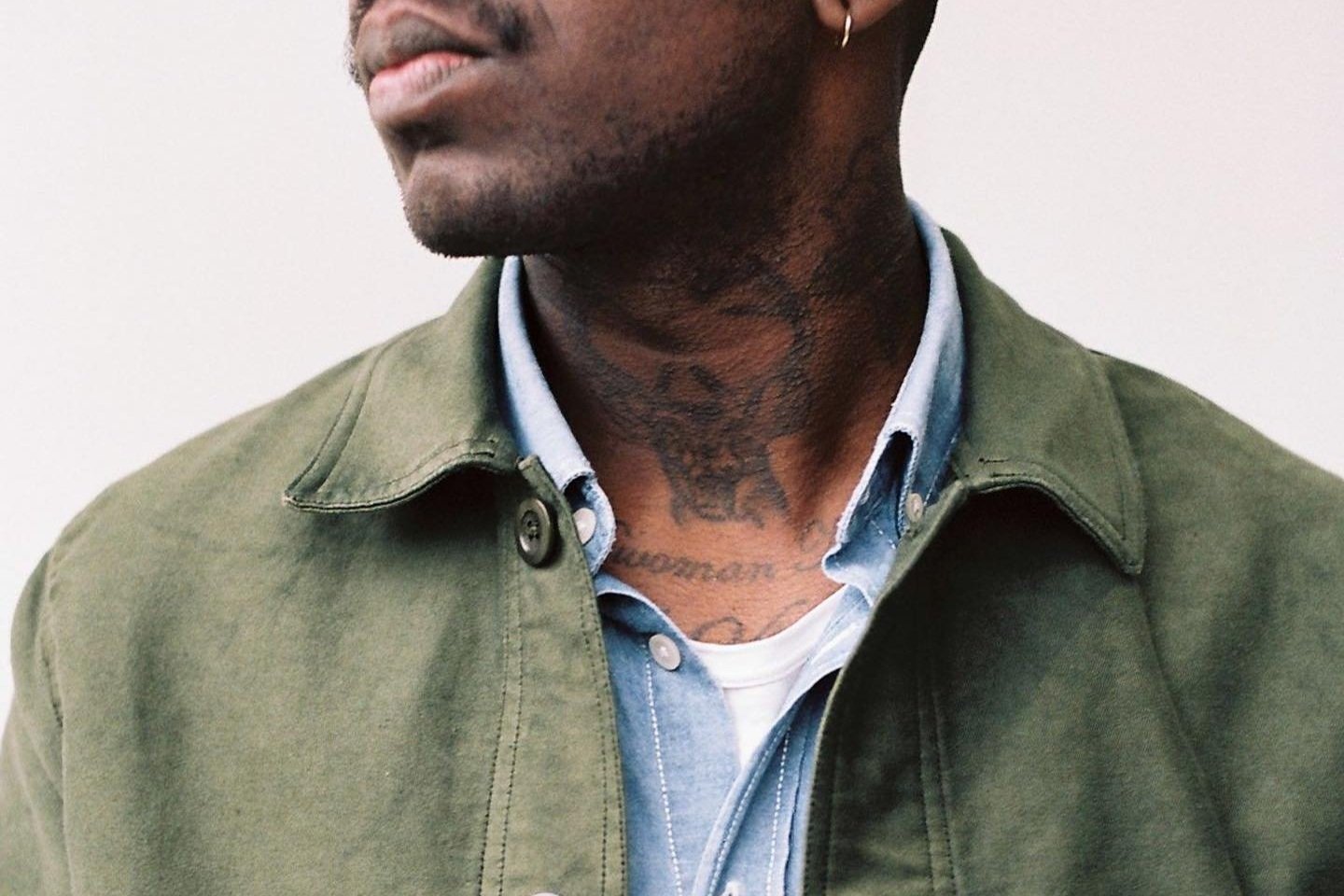
The duo (and couple) behind Paynter Jackets, Becky Okell and Huw Thomas, seem to emit a challenger mindset from their souls. The business, founded in 2018, which sells only four limited-edition batches of a particular piece of clothing per year, is challenging fashion’s accepted trade-offs. Their unique model takes control of the potential discrepancy between supply and demand whilst improving quality and eliminating waste.
In a world where customers want everything yesterday, Paynter proves that it is possible and profitable to make something worth the wait. Each piece must be pre-ordered, and much like highly anticipated Supreme drops, the opportunity doesn’t hang around for long. Batch No.4 of 750 pieces sold out in two minutes flat. And because they offer returns, it works to have a waitlist of potential buyers in the wings. From this fast start, the successful customer won’t be getting their new garment any time soon. Instead, it is only then that Paynter begins manufacturing, usually at a small family run factory in Northern Portugal.
Paynter has embraced the constraint of delayed gratification and uses the intervening time to share weekly content about your piece. Not only does this excite customers as to what’s on its way. It also educates them as to the effort involved. Hopefully, encouraging them to take care of, and savour, the thoughtfully created item. This added level of detail has struck a chord with a particular creative, open-minded and perhaps a little geeky mindset. I imagine it also fuels some solid pub brags about why ‘my artisan jacket is more interesting than yours’. All good PR ahead of Paynter’s much anticipated next drop.
This imbalance between supply and demand doesn’t come without potential customer frustration, which the pair take personally, even sending individual apology videos to those disappointed — ultimately creating a fanbase of eager buyers ready for the next batch.
There is a sustainability story within the business model, they are part of 1% for the Planet, but they don’t hark on about it. Instead, they inject the brand with their humanity and humility, being open about their journey, building their business in public and sharing the truth of the challenges along the way.
Talking to Becky and Huw, it’s clear they are a rare breed. Paynter isn’t just a brand for hipsters; their oldest customer (so far) is a 74-year-old lady from Sweden. They ship to over 50 countries, but they don’t want to grow. Instead, they are motivated by building a business that remains independent and sheds light on a new way of doing things. When potential investors have approached and encouraged them to diversify, they would rather leave that opportunity for another entrepreneur. I’m excited to see how Paynter can inspire and enable a new generation of challengers in 2022 and beyond.
If this appeals to you then the next drop is Batch No. 10 the Wilton Car Coat, available on 29th Jan at 9am. You’ll have to be fast…
This article first appeared on eatbigfish's The Challenger Project website.
